

Florida Currents
GULF COAST ELECTRIC COOPERATIVE


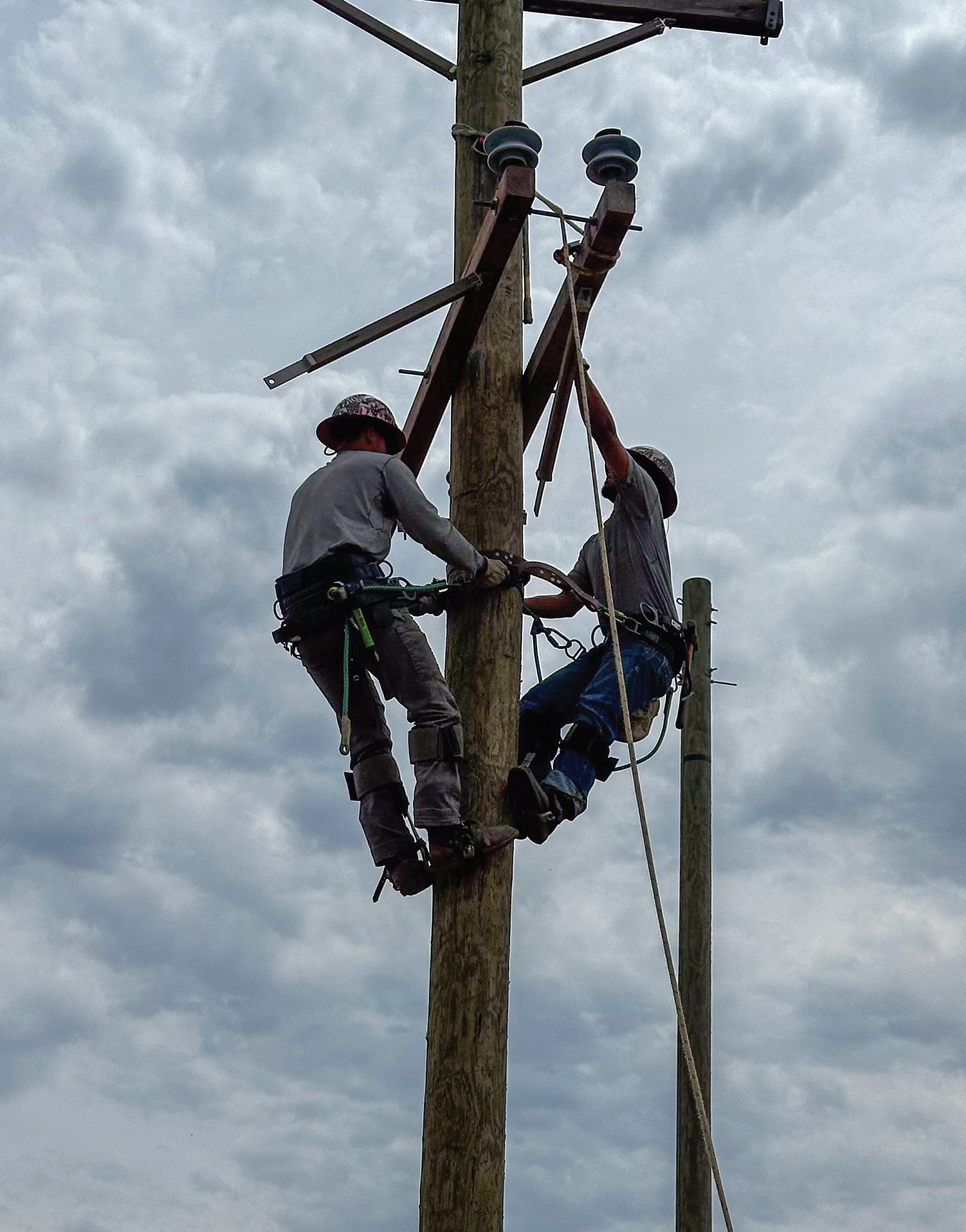
Toward
Landon Hysmith,
McDonald learn the proper way to hang a cross arm using a handline and hooks during line technician training. Read more on Page 4. JULY 2025
and
Grand Prize Winner




left,
Ben






































Florida Currents
July 2025 • Volume 14, No. 9
CEO Michael Shepard
SENIOR VP OF CONTENT Leon Espinoza
EDITORIAL DIRECTOR Chasity Anderson, CCC
DEPUTY EDITORIAL DIRECTOR
Noble Sprayberry
SENIOR EDITOR Jennifer Paton, CCC
FLORIDA CURRENTS EDITORS
Valeri Saldanha Rosa; Sable Riley, CCC
ASSISTANT EDITORS Victoria Hampton, CCC; David Herder, CCC
ASSOCIATE EDITOR
Nina Todea
PUBLICATIONS PRODUCTION
SENIOR MANAGER
Elizabeth Beatty
SENIOR PUBLICATIONS COORDINATOR
Alyssa McDougle
Members acknowledge that $4.49 a year, plus postage, is the cost to publish 12 issues a year of FLORIDA CURRENTS ISSN 23276304 (USPS 8300). Published by Pioneer Utility Resources Inc., 5625 NE Elam Young Parkway, Suite 100, Hillsboro, OR 97124—a not-for-profit Oregon cooperative corporation—the magazine serves the communication needs of consumerowned electric utilities in Florida. Preferred Periodicals postage paid at Hillsboro, OR 97123 and at additional mailing offices.
Postmaster: Send address changes to 5625 NE Elam Young Parkway, Suite 100, Hillsboro, OR 97124-6422.
HOW TO CONTACT FLORIDA CURRENTS
Subscription services:
Nonmember subscriptions $15 U.S. a year; $25 foreign a year. Prepayment required. Allow 4-8 weeks for first issue. Identify local edition desired. Have a problem receiving your magazine? Utility members should contact their utility office. Nonmembers call 503-357-2105 or email mailingdept@pioneer.coop.
Back issues:
Back issues and extra copies are $3 each, prepayment required. Supply is limited. Identify edition, month and year. Call first to check availability. Contact Pioneer Utility Resources: P.O. Box 1306, North Plains, OR 97133-1306; 503-357-2105; email: mailingdept@pioneer.coop.
DISPLAY ADVERTISING INQUIRIES
American MainStreet Publications 611 S. Congress Ave. Suite 504 Austin, TX 78704-1714; 800-626-1181 or 512-441-5200; amp.coop.
© 2025 Pioneer Utility Resources. All rights reserved. Reproduction in whole or in part without written permission is prohibited. Direct reprint requests to editor@floridacurrents.com or for more information, visit www.pioneer.coop.
In the June edition of Florida Currents, “Legacy in the Lanes” erroneously stated Malcolm Hosford swam for Florida State University.
Worried about severe weather?
Rest assured, we’re ready. Let’s
Talk.
Wind and rain, tornado to hurricane, we are prepared for severe weather. We harden our system to help prevent outages. We keep vegetation trimmed to minimize debris. And we train–all year–to respond as quickly and safely as possible when a storm strikes.
www.gcec.com 800-333-9392
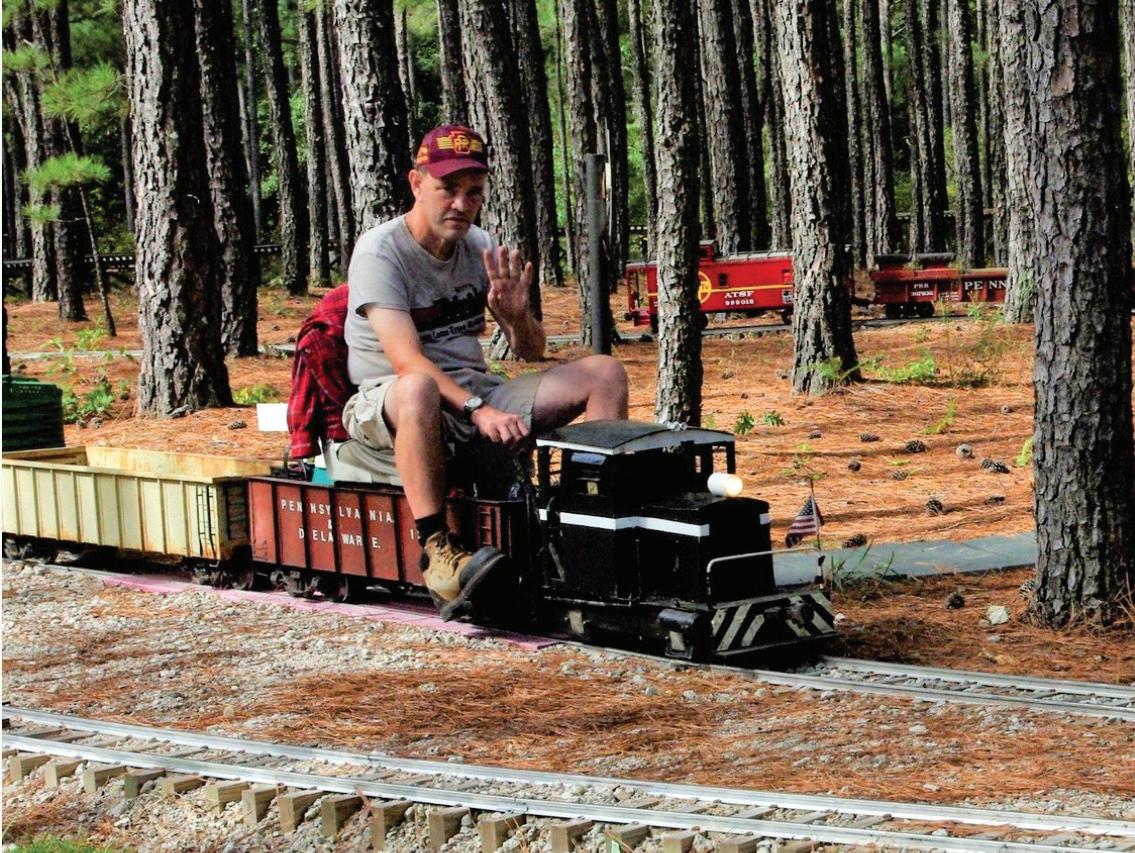
Do the Locomotion
Up Close, Page 10
Florida Easter
Egg Hunt
Gulf Coast scallopers rejoice Spotlight, Page 12
Mindful Mixology Guide to summer mocktails In the Kitchen, Page 16
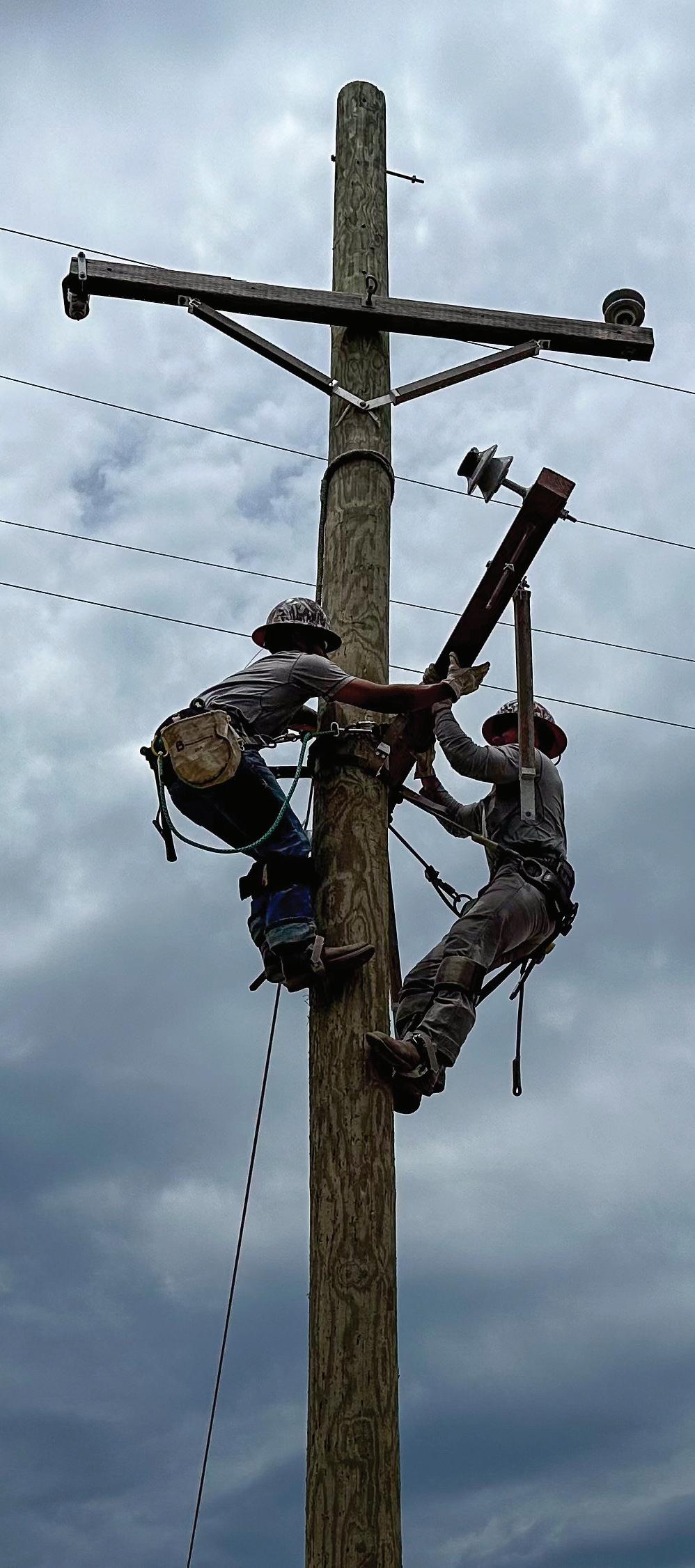
Climbing Toward Certification
Training program teaches proper construction and safety procedures
Several Gulf Coast Electric Cooperative employees recently began the process of becoming certified line technicians through the Tennessee Valley Public Power Association’s Line Technician Apprenticeship Training Program.
The program includes four years of on-thejob training under a lead line technician, four correspondence courses and three in-person labs focused on climbing, construction and operations.
The coursework covers math, electricity and the fundamentals of alternating current—building blocks for understanding the trade. Students also learn about everyday tools and equipment, stringing and sagging wire, underground distribution systems, line maintenance, transformer connections, meter applications, substation operations and how to measure voltage and current.
Hands-on labs reinforce these lessons. Participants practice tying knots, safe climbing techniques and pole-top rescue. They build and frame lines to specifications, prepare stress cones for underground cable and review grounding practices. The labs also cover job briefings, basic troubleshooting, transformer banking and bucket truck safety procedures— including pretrip inspections and rescue drills.
The program includes both written and physical tests.
While certification isn’t required at all electric cooperatives, Gulf Coast Electric believes it’s essential to ensuring safety and consistency.
“Gulf Coast Electric lineworkers are not promoted to the line technician position title until they are certified,” Chief Operations Officer Francis Hinson says. “Certification enhances not only employee knowledge, but also safety practices.”
Ben McDonald, left, and Landon Hysmith learn the proper way to hang a cross arm using a handline and hooks.
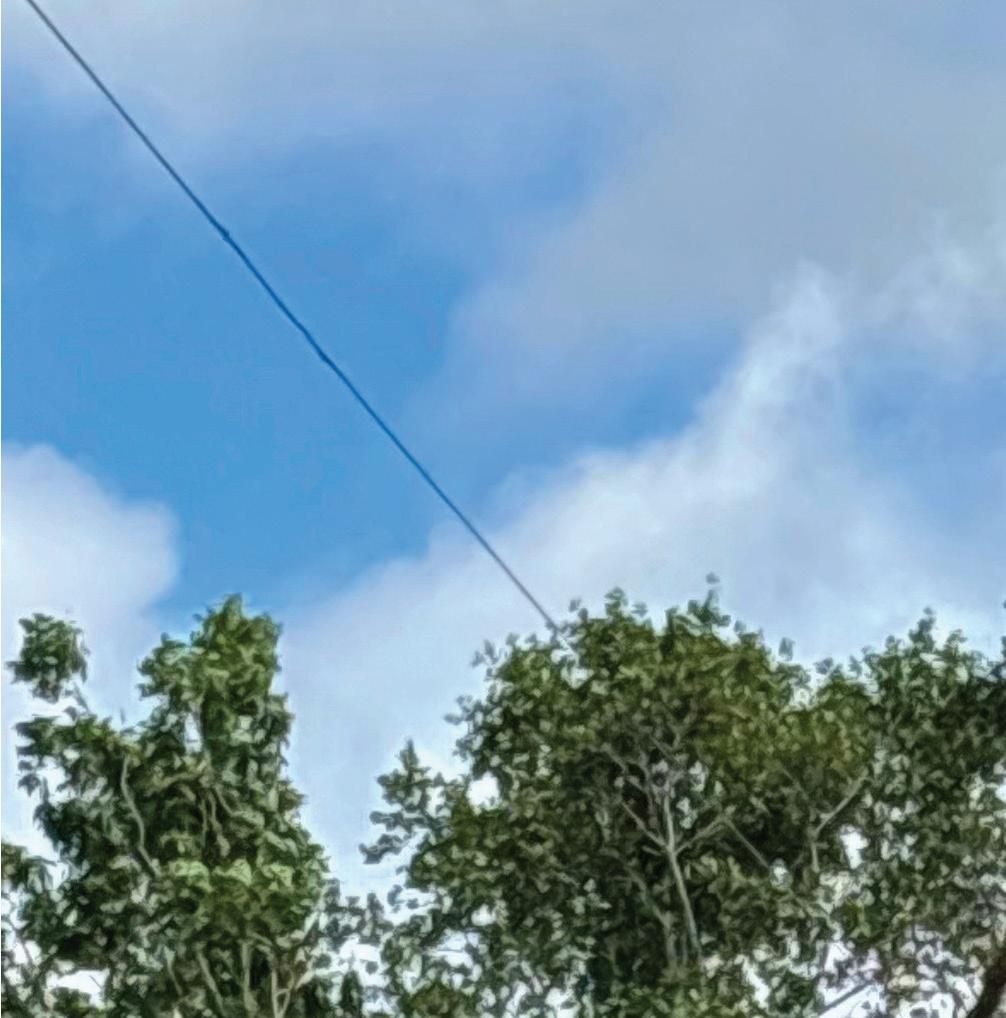
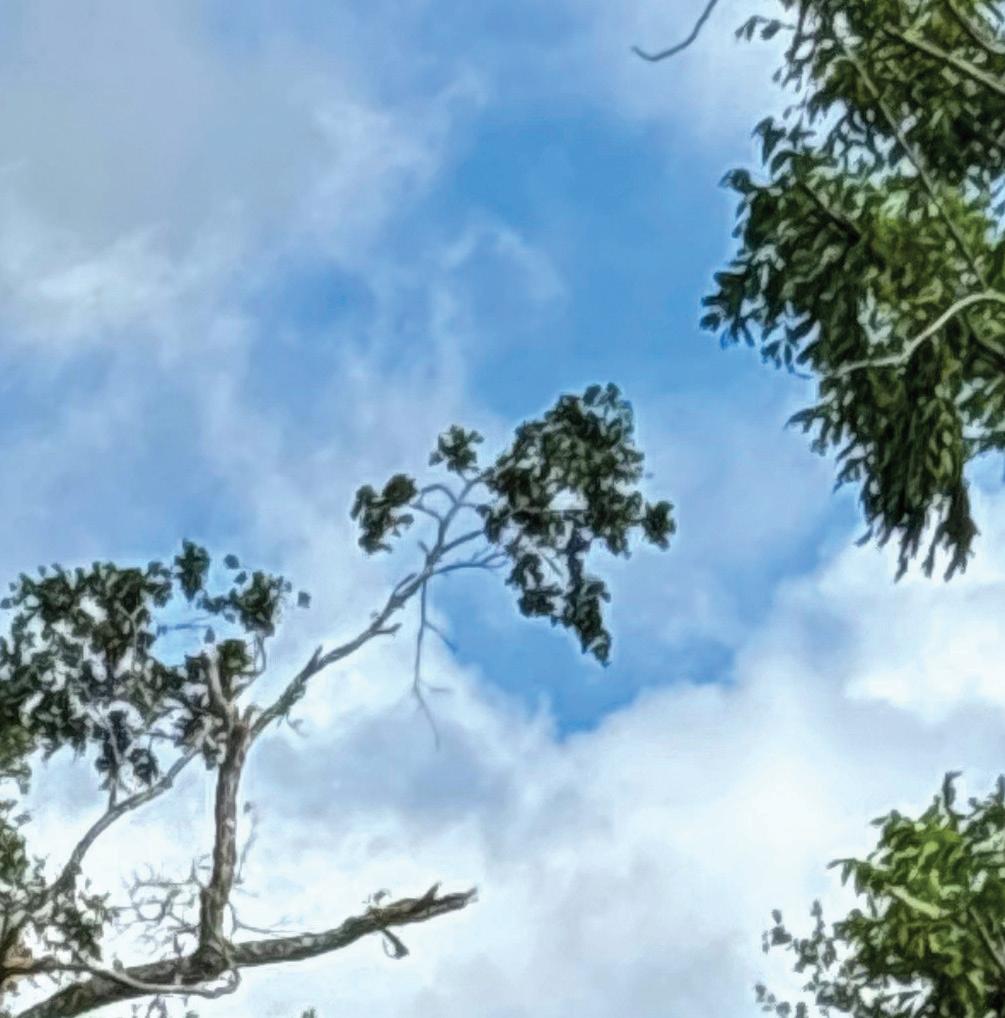
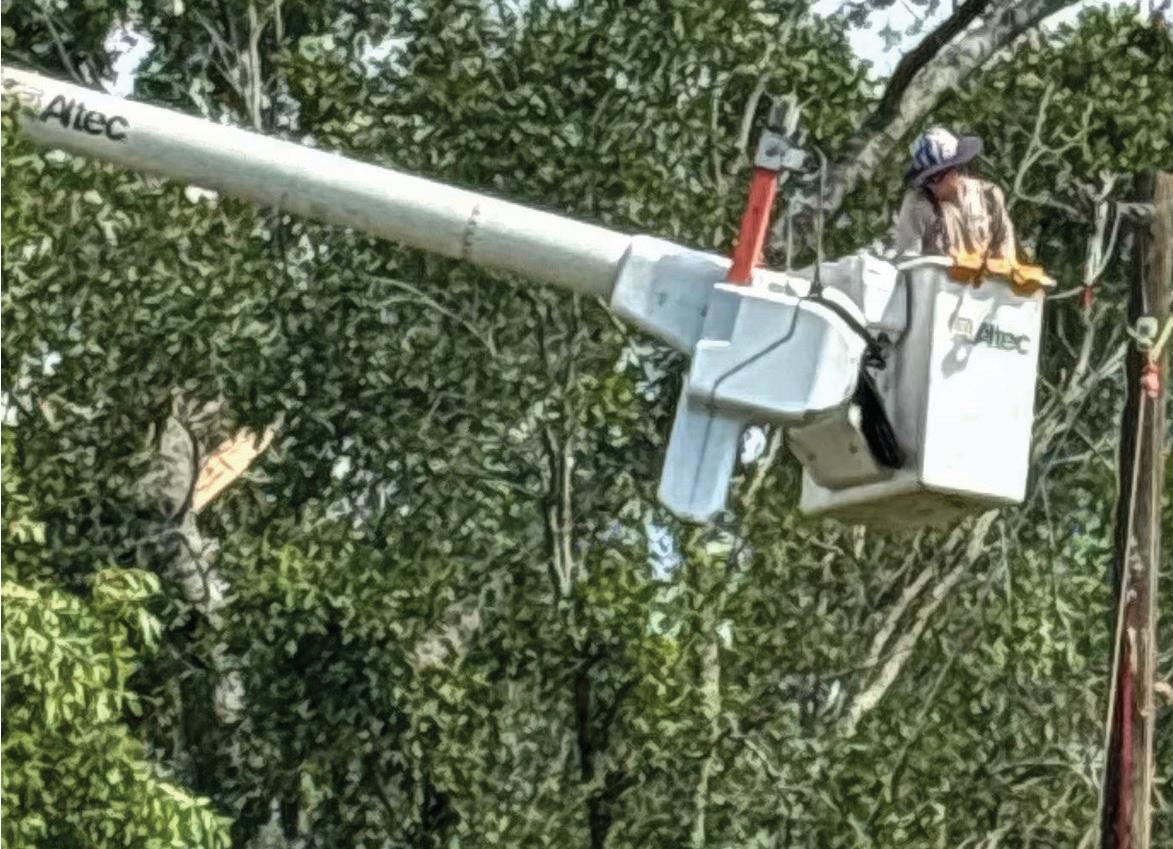
Cooperation Among Cooperatives


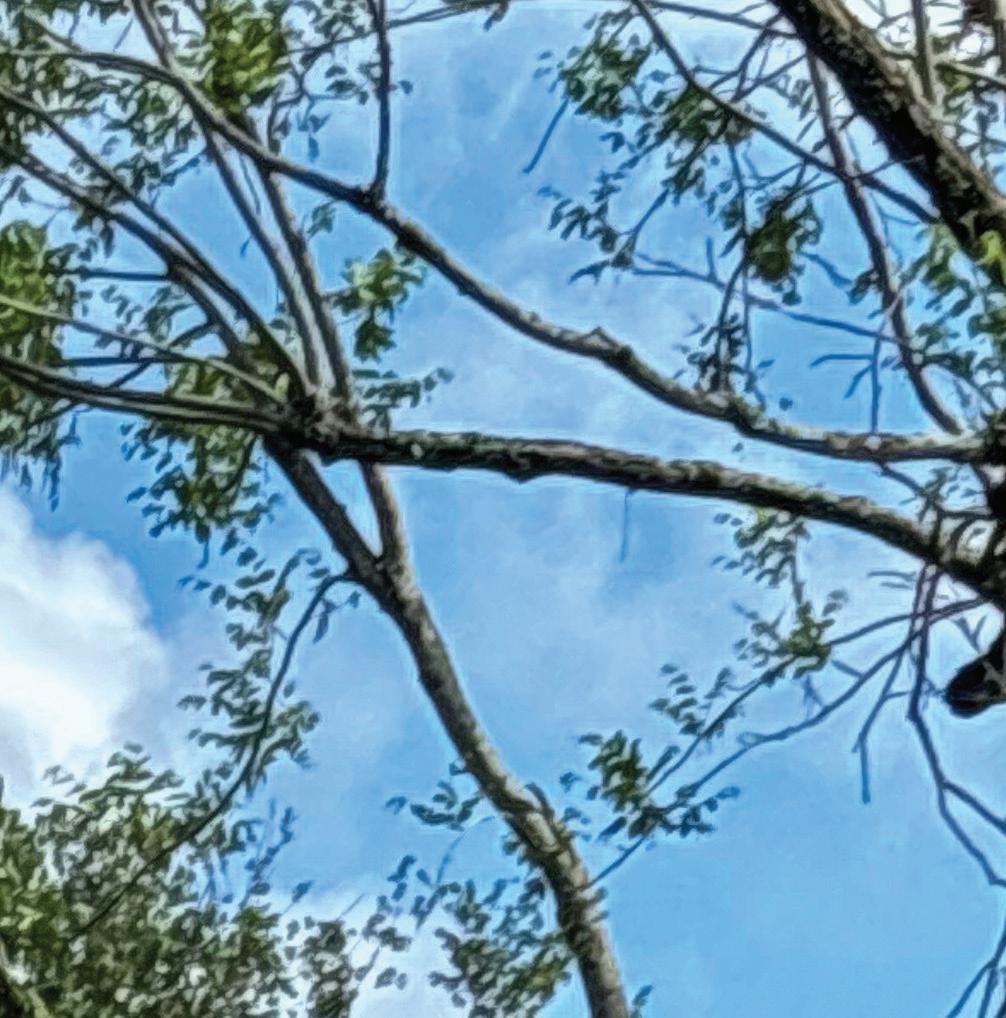
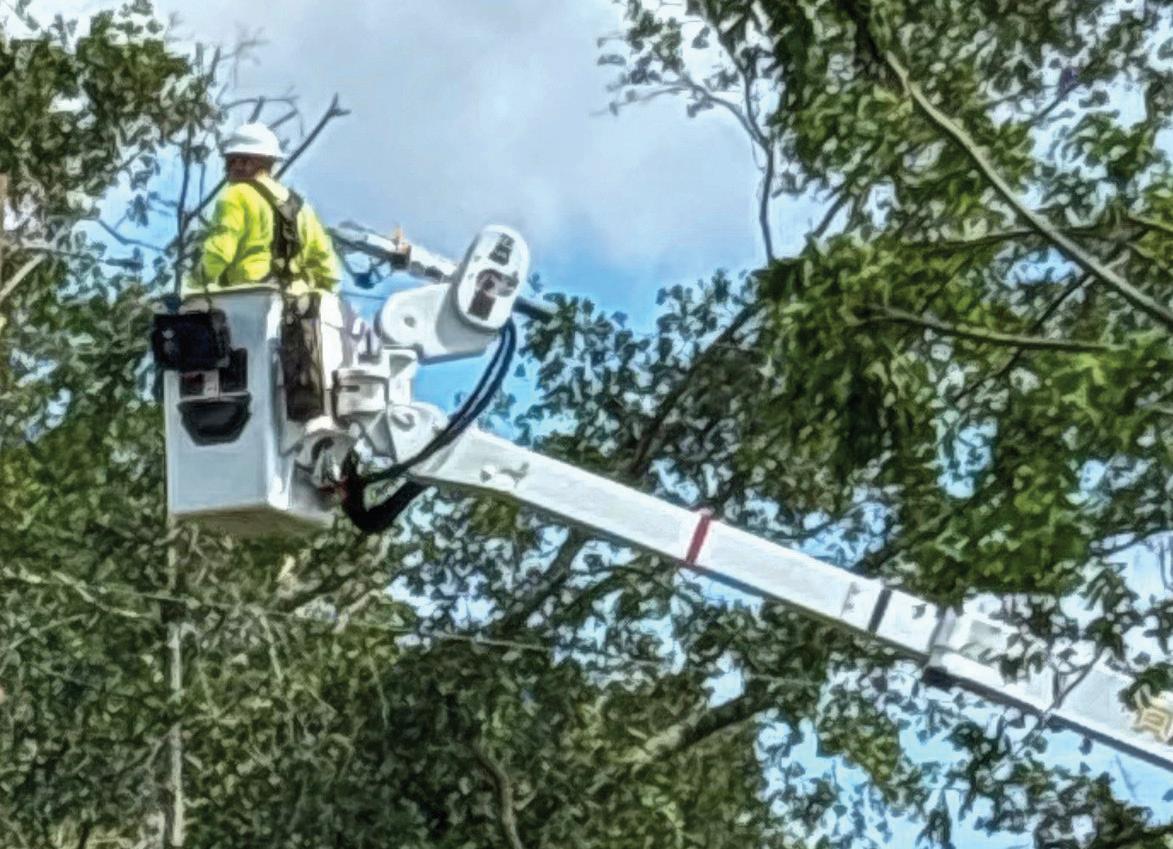
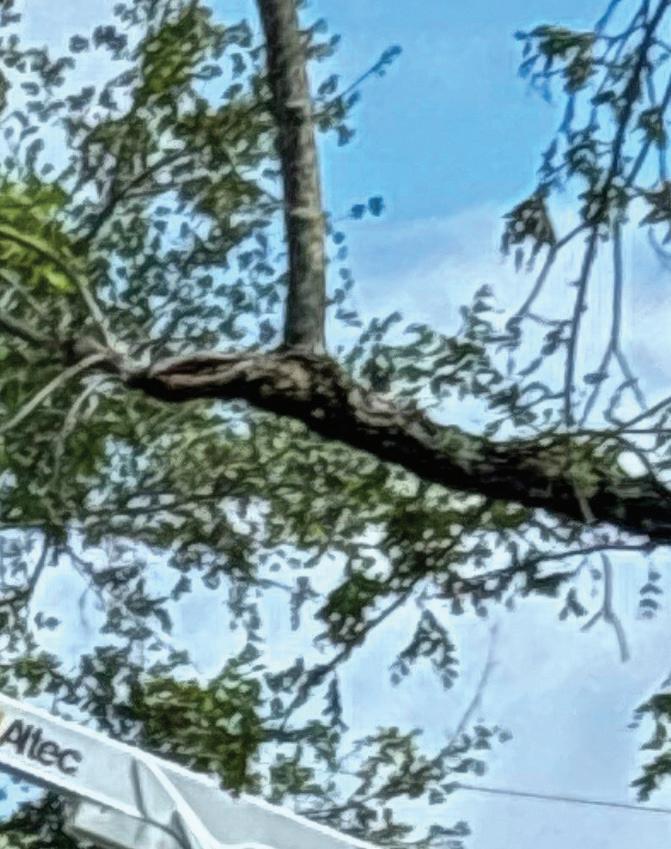



GCEC crews assist WFECA after tornado damages Holmes County system
On Saturday, May 10, a powerful EF2 tornado tore through Esto, located in northern Holmes County, causing damage to West Florida Electric Cooperative’s electrical distribution system. More than 30 poles were snapped and roughly 4,000 members experienced power outages.
Gulf Coast Electric Cooperative crews joined the restoration effort, working even on Mother’s Day. By that afternoon, the team had restored power to all but 169 members. Those final few had service restored by the end of Monday, May 12.





The restoration effort highlights why cooperative collaboration matters. In moments like this, no single co-op stands alone—the mutual aid network ensures critical services can be restored efficiently after severe weather.


A tornado tore through Esto in northern Holmes County, damaging at least 18 homes and structures, disrupting utility infrastructure and leaving one person with minor injuries.
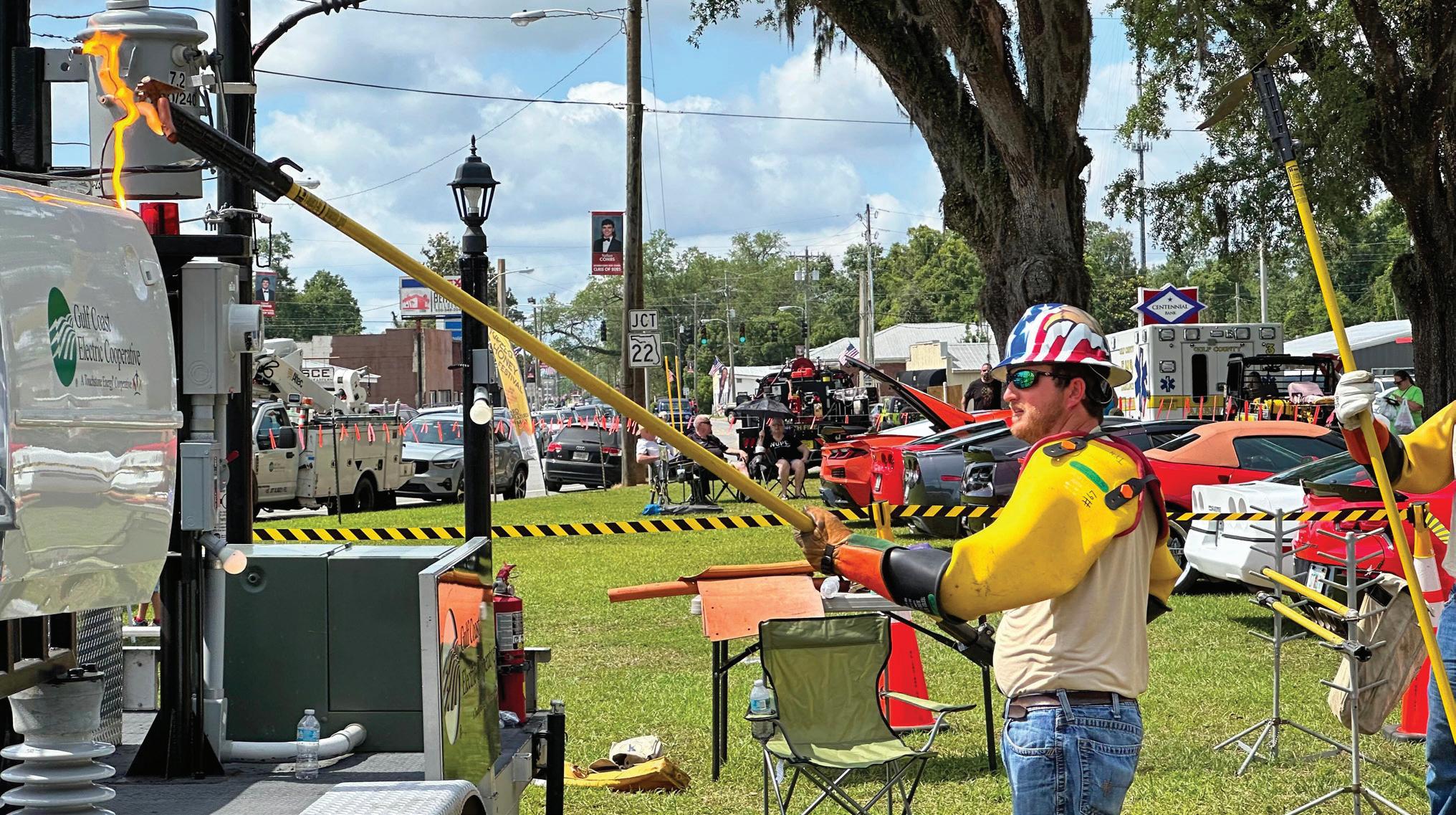
Live Line Safety Demonstration Trailer Visits Tupelo Honey Festival
Gulf Coast Electric Cooperative’s live line safety demonstration trailer made a powerful impression at the Tupelo Honey Festival in Wewahitchka.
Built in-house by GCEC employees, the trailer features working electrical equipment used in the field by lineworkers. The goal is simple but critical: to educate the public about the dangers of electricity and the importance of staying safe around power lines.
Each demonstration begins with an overview of the personal protective equipment lineworkers are trained to wear— including rubber gloves, sleeves and specialized tools such as hot sticks—before they approach a live line. From there, the presentation shows what can happen when common items like tree limbs, balloons, kite strings, ladders or a fire hose come into contact with an energized line. Even items that might seem safe, like rubber boots, are used in the demonstration to help dispel dangerous misconceptions.
One of the most eye-opening parts of the event is the simulated car crash scene. Lineworkers demonstrate what happens when a car touches a live line, and they explain why you should never approach the vehicle—even if someone inside needs help. A hot dog is used to simulate a human hand, showing just how quickly and severely a person can be injured. In that scenario, the safest course of action is to remain in the car and wait for help. If you absolutely must exit, lineworkers demonstrate the proper “bunny hop” technique—keeping your feet together and avoiding step potential—to safely move away from the vehicle.
GCEC uses the live line trailer as a public safety resource, making it available to schools, fire departments, civic organizations and other community groups as part of its commitment to safety and education. n
To book a demonstration, contact Kristin Douglas at 850-265-3631, ext. 3002 or kdouglas@gcec.com.
Using a hot dog to simulate a human hand, Jacob O’Bryan shows Tupelo Honey Festival attendees why it’s dangerous to approach a vehicle that has come into contact with energized power lines.
Florida Co-ops Prepare for Hurricane Season
Nelson Mandela once said, “One cannot be prepared for something while secretly believing it will not happen.”
As Floridians, we know the next big storm could be just around the corner— which is why we constantly prepare for the worst while hoping for the best.
Florida’s 18 electric cooperatives gathered in Ocala for an annual workshop organized by the Florida Electric Cooperatives Association to discuss the 2025 hurricane season. Tress Dameron and Angie Morris attended as Gulf Coast Electric Cooperative’s representatives.
Each storm presents unique challenges. This year, attendees heard from Escambia River Electric Cooperative and Talquin Electric Cooperative staff about the difficulties they faced—and the lessons they learned—from recent tornadoes and a once-in-a-lifetime snow and ice storm that impacted their service territories over the past 12 months. By sharing their experiences, these co-ops helped sister cooperatives find ways to strengthen their ever-evolving emergency response plans.
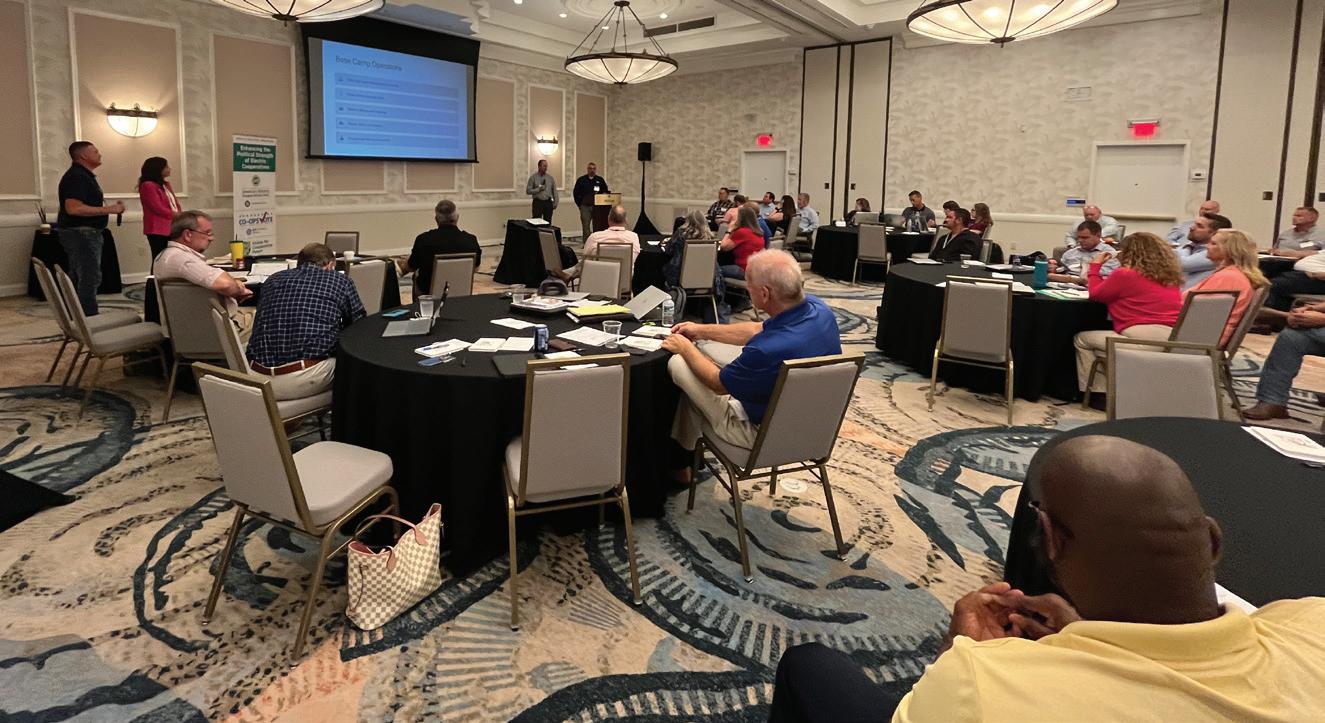
Attendees also heard from Robb Brown and Todd Fountain of Duke Energy, as well as Preston Bowling, director of Marion County Emergency Management.
Electric cooperatives work closely with other utilities and local emergency management teams. Meetings like this—held before disaster strikes—are vital to building strong relationships and improving how we respond and
serve our communities together in a crisis. We thank our utility and emergency management partners for their continued commitment and collaboration.
Though life offers no guarantees, one thing is certain in the face of disaster: Electric cooperatives across Florida will work together to restore power as safely and quickly as possible. We are all stronger and better together. n








Florida’s 18 electric cooperatives gathered in Ocala for the Florida Electric Cooperatives Association’s annual storm preparedness workshop.
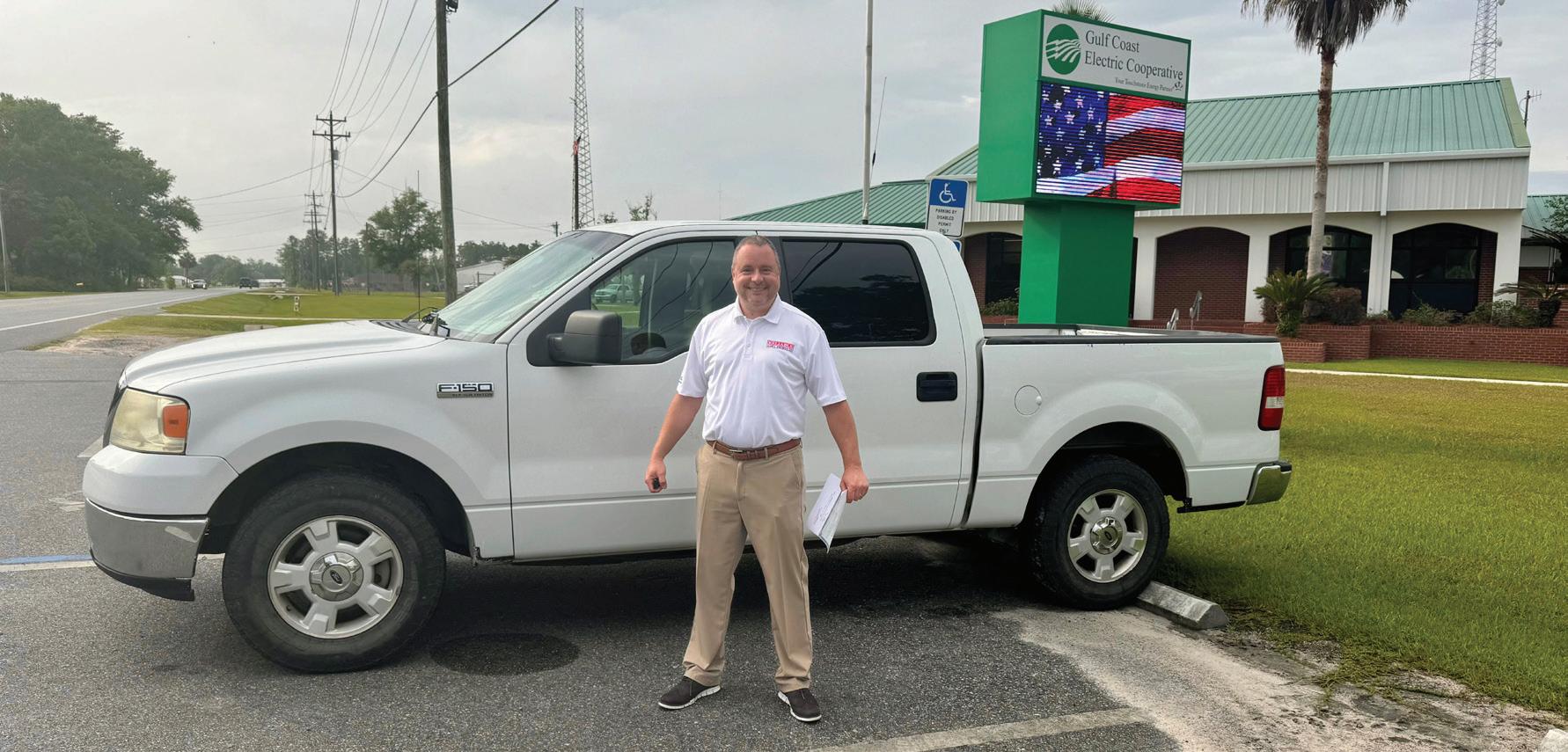
Stephen Saade stands in front of his Ford F-150 after being selected as the grand prize winner in Gulf Coast Electric Cooperative’s 2025 election giveaway.
Members Win Big at 2025 Annual Meeting
We would like to thank our members for participating in the 2025 election. In early March, members received voting packets with instructions for returning their ballots by mail using postage-paid envelopes or voting online. A total of 3,676 ballots were returned.
As a token of appreciation, each member who submitted a ballot—by mail or online— received a $5 bill credit. In addition, the third party that conducted the election on our behalf randomly selected 40 members to receive $50 gift cards, 10 members to receive $100 bill credits and one grand prize winner of a pickup truck.
The winners of the $50 gift cards are:
• Jasmine Miles
• Avis Elaine McGill
• Kim Portivent
• David Stults
• Prayer Chainers Mission
• Shelby White
• James Riley
• Kevin Clements
• James Miller
• Pat Forehand
• Rebecca Ribbing
• Johnny and Wanda Skipper
• Eva Morrell
• Mark Isenberg
• Timothy Wayne Saltsman
• Jesse Tucker
• Thomas Parker
• Marie Hall
• Jill Bushnell
GCEC Blood Drive Collects 15 Units
Gulf Coast Electric Cooperative’s heart beats for its community, evidenced by its recent blood drive with OneBlood at GCEC’s Southport and Wewahitchka offices. The event brought in 15 units of blood.
According to OneBlood, each donation can potentially save up to three lives, meaning 45 patients could benefit from the lifesaving efforts of blood donors. Donations are typically transfused into a patient within 48 to 72 hours.
If you were unable to donate in May, make sure you follow us on social media and be on the lookout for upcoming dates in November.
• Carl Stadtmiller
• Jeanette Scroggins
• Charles Scott
• Brenda Pumphery
• Robert Batyski
• James Grizzard
• Elizabeth Anne Oaks
• Brenda Malcolm
• Jason Franzese
• Bettie Fry
• John Plitsas
• Jodi Elko
• Guy Ammerman
• Kari Summers
• Michael Linton
• Daisy Price
• Dorris Wayne Forehand
• Wilma Thomas
• John Paul
• Larry Miller
• Gary Herrschaft
Gift cards will be mailed to these winners.
The winners of the $100 electric bill credits are:
• Steven Dever
• Linda Sale
• Lolita Beech
• Diane Pierett
• Rudy Watts
• Williodean Whitehead
• Catherine Denise Lee
• Michael Seigler
• Christian Baldwin
• Tanya Pitts
These winners were notified by mail and will see the credit on their electric bills.
The winner of the pickup truck is Stephen Saade.
Thank you again to all our members for participating in the 2025 election.
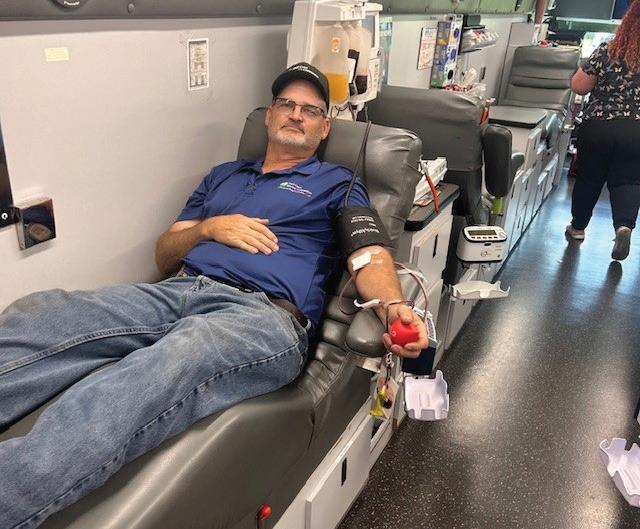
GCEC’s Chris Flowers has his blood drawn by a OneBlood team member during a recent blood drive.













































By Melanie Jones


Florida is known the world over as a vacation destination and an angler’s paradise. But what people might not know is that the Sunshine State is also a hotbed of train activity.








CSX and FEC are headquartered here, and Norfolk Southern and Amtrak crisscross the landscape. Then there are the small-scale replica railroads winding through yards, woods and parks. These tracks transport 1.5-scale replicas of steam engines, box and passenger cars big enough for an adult to climb aboard and ride.






Steamers and Railroad laid their tracks on land shared with Jacksonville. Visitors and new members are welcome, and children’s parties are not uncommon.

“It started out as a private enterprise,” club President Robert Corriveau says.


Chugging Along





Club members keep these trains running, regularly doing maintenance and laying more track. They hold regular workdays and ride the rails together. There are even regular state inspections.

Unlike some live steam railroads built on private property for private use, members of Northeast Florida Live



The club started in 1996 with a relatively







—

small number of members who worked together to lay tracks on privately owned property in Boswick.

When the group outgrew its space there, members moved the railroad to Florida Agricultural Museum in Palm Coast, where it remained until that property was sold. Northeast Florida Live Steamers and Railroad then settled into its current
sports

home at New World Sports Complex in Jacksonville.






Robert Corriveau, Northeast Florida Live Steamers

Do the Locomotion Live steamers love trains of all sizes







“Now we have a lovely 300-acre preserve that we have tracks running all over it,” Robert says.


At the sports complex, club members maintain 8 to 9.5 miles of track. It’s





The more cars you have, the bigger dog you are.

and Railroad president













constantly growing, so it’s hard to get an exact count.
“We build as we can afford,” Robert says.







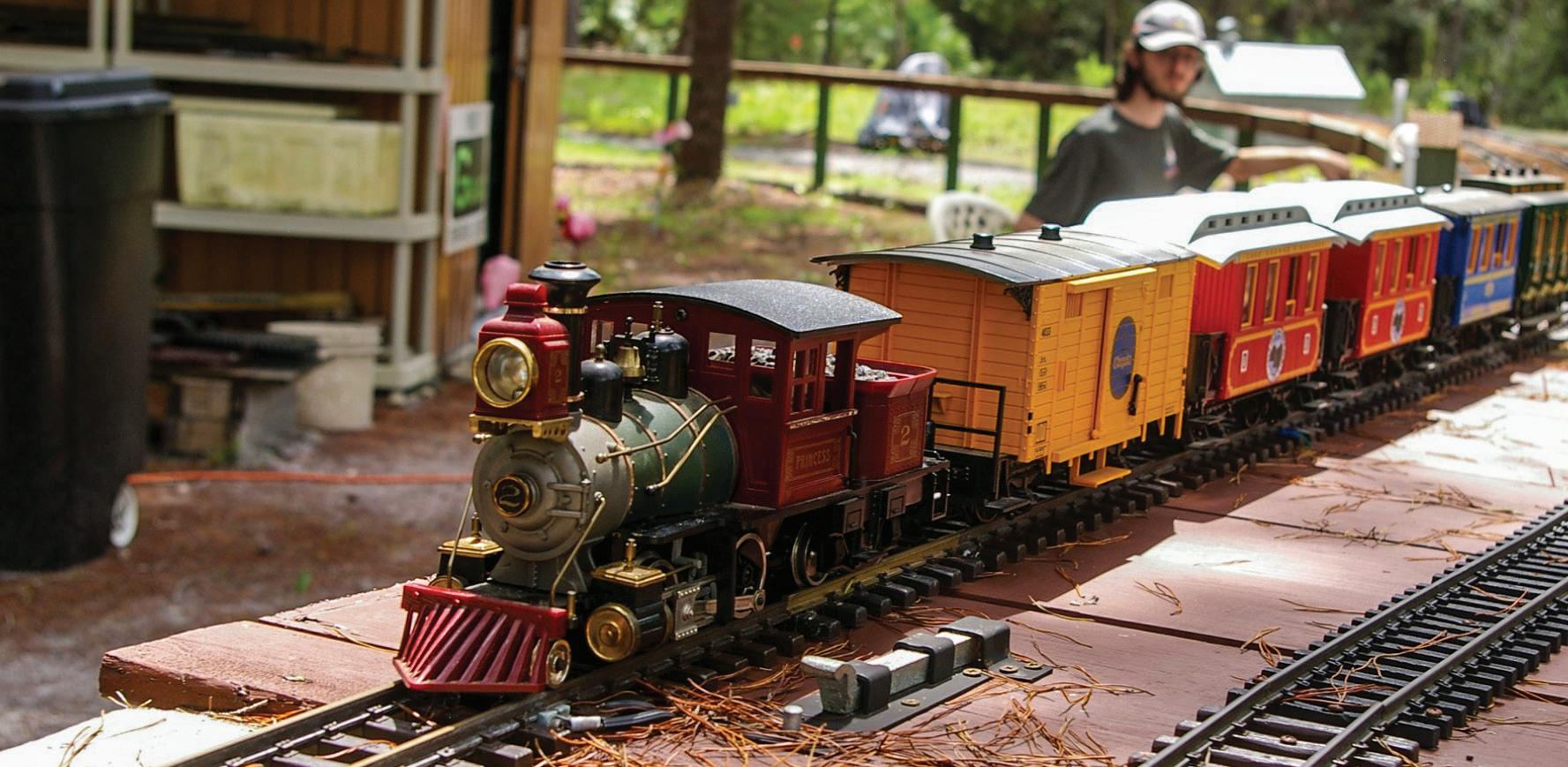












A train ride at Northeast Florida Live Steamers isn’t just a trip to nowhere. Partway through the ride, passengers can get off to see the group’s other prize jewel—a G-gauge train set similar in size to those seen beneath some Christmas trees.

























Passengers on the live steam trains can stop and get a look at a smaller version: a G-gauge train. PHOTOS COURTESY OF DAVE NICOL


Locomotion





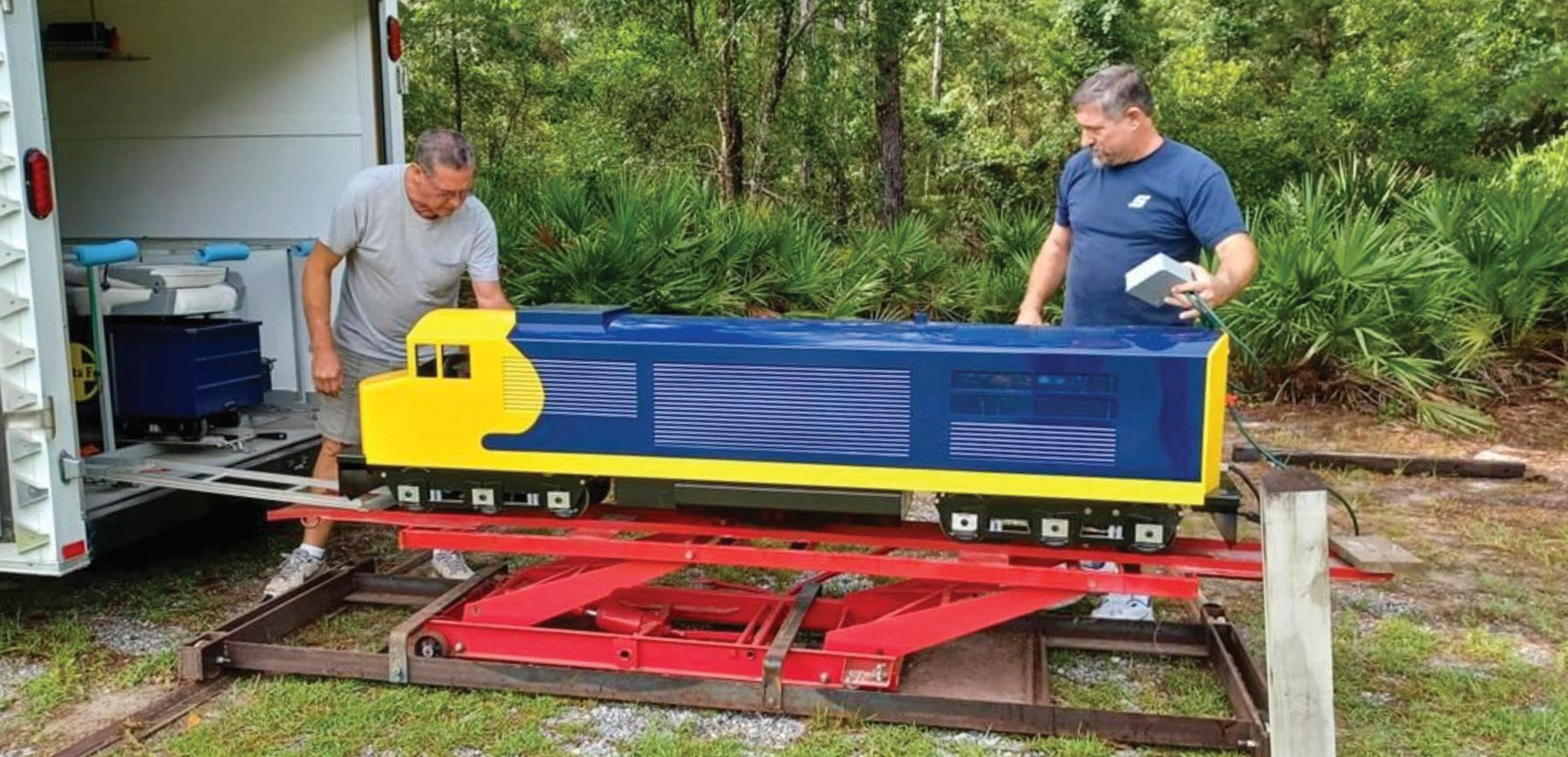

Florida Is Rich With Live Steamers
Northeast Florida Live Steamers Duval County northeastfloridarailroad.com
Largo Central Railroad
Largo Central Park, Largo lcrailroad.org





After some time watching the G-gauge, riders can hop back on the live steamer and ride back to the station.
The nonprofit organization accepts donations and is always looking for new members. While anyone is welcome to join, the club is specifically interested in attracting younger members.




Central Pasco and Gulf Railroad
Crews Lake Park, Spring Hill cp-grr.com







“Our primary age is upper 60s and 70s,” Robert says.




“Some people can get into it for about $2,000,” he says.
To make the hobby more affordable, Northeast Florida Live Steamers has shared trains.

Railroad Museum South Florida Lakes Park, Fort Myers rrmsf.org
Tradewinds & Atlantic Railroad
Tradewinds Park, Fort Lauderdale livesteamers.org
Ridge Live Steamers Dundee ridgelivesteamers.org


“If you want to come out and join our club, you don’t have to have equipment,” Dave says.
He says some folks just ride the trains “while we’re doing the grunt work or the work that they can’t concentrate on.”

Investing Time and Resources



That may be because live steamers can be an expensive hobby.

















Club Vice President Dave Nicol spent about $20,000 on a steam locomotive three years ago. Locomotives can range from $2,000 to $100,000, depending on the size and type. Some members have multiple engines, and most have cars to






The expense isn’t just the trains. There are transportation costs. Trailers are necessary to haul everything.


“These things are 8 to 9 feet long, so it takes up a lot of space,” Robert says. “I’d say Dave’s engines are about 1,000 pounds.”





Big Boots & Western Railroad Candler bigbootsrr.com
Manatee Central Railroad Parish
Sebring System Railroad Sebring











Some engines weigh in at as little as 100 pounds, and owners of battery-operated engines can take the batteries out and easily transport them.


“The average person or average family just doesn’t have $20,000 to drop on the train,” Dave says.








“Dave’s is actually a real working steam engine, so it’s really kind of cool,” Robert says. However, some locomotives are smaller and cheaper.













“But the freight cars would probably be about 400, 500 pounds apiece, give or take,” Robert says.
The cars that run behind the locomotives run about $2,000 apiece, but someone who is mechanically minded can save money by building their own.


“It’s kind of cool,” he says. “The more cars you have, the bigger dog you are.”
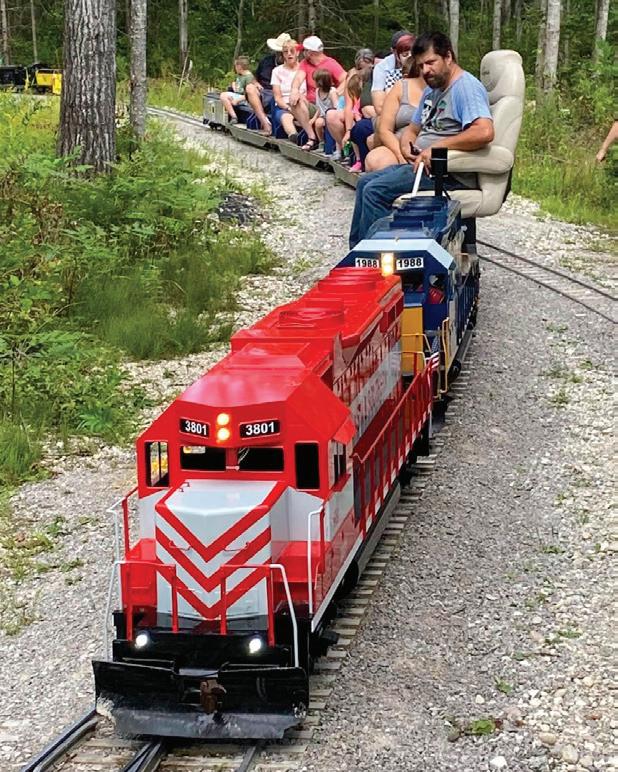


The railroad club members keep authentic gear on the track.
Train enthusiasts unload an engine.
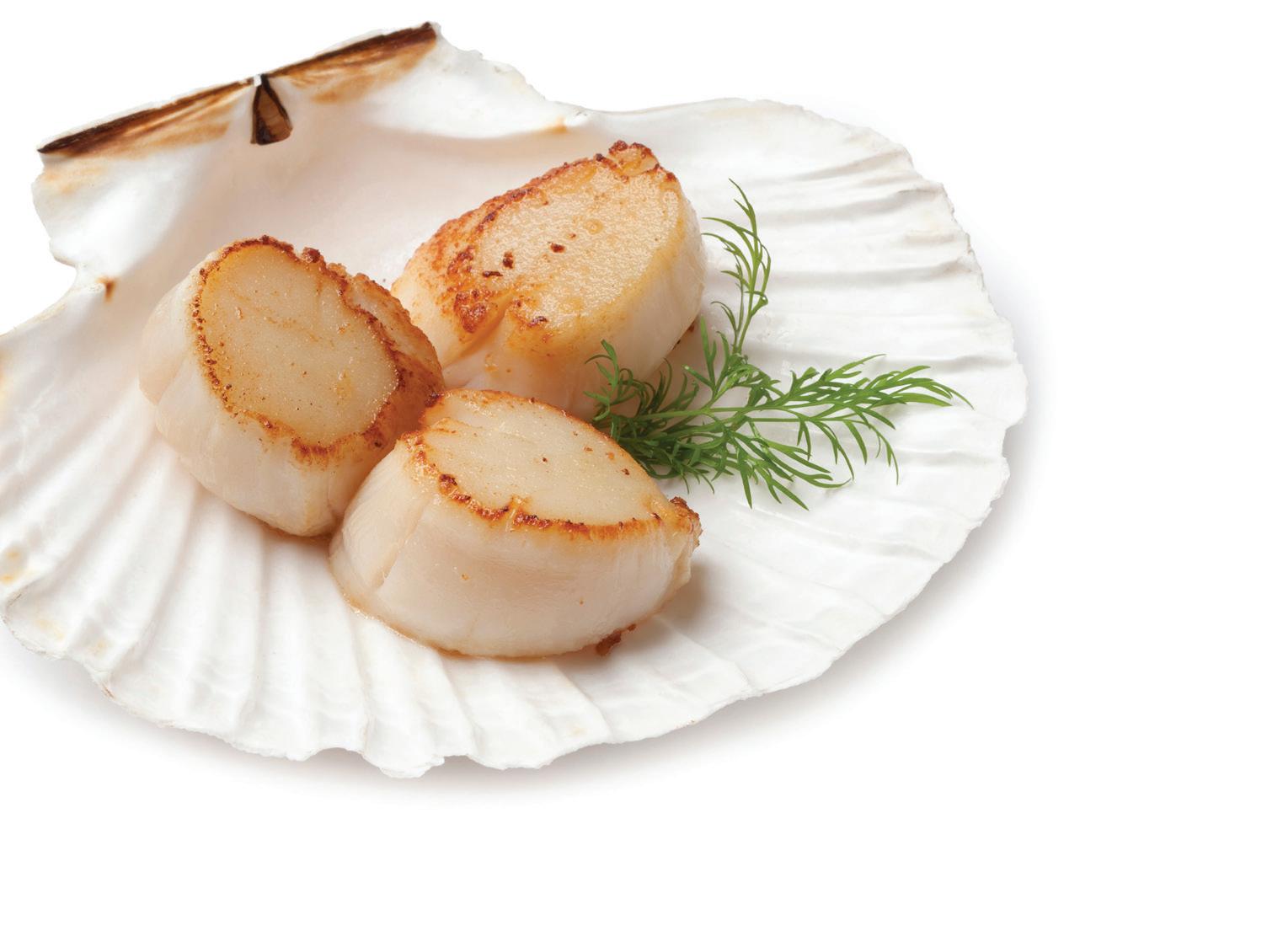
By Chere Coen
Island Paradise Charters’ Capt. Larry Sheehan sails a family off the coast of Port St. Richey to snorkel in the shallow seagrass fields. Their goal is to find and retrieve enough bay scallops to fill their daily limit, then return home with dinner for the group. It’s an easy fishing experience during a short summer window—snorkeling in the warm shallow Gulf, looking for the trademark blue eyes of the scallops and snatching up the bivalves.
Tender, tasty treasures abound for Gulf Coast scallopers A Florida
“In our backyard, the waters are crystal clear,” Larry says. “It’s a great environment for the scallops.”
A scout heads out first, looking for the best fishing spot. Then Larry and his group of up to 38 scallopers follow with snorkels, fins and special mesh bags. One person stays on board while the other divers fish for scallops.
“It’s almost like an Easter egg hunt,” Larry says. “You can simply reach down with your own bare hands. You don’t need anything special.”
Capt. Curt Romanowski, a retired firefighter, usually brings visitors into
the Gulf to hunt for fish with his Florida Backwater Charters. But come summer, it’s all about the scallops. He brings up to six people on his boat for a four-hour trip, providing all the gear, Florida fishing licenses and a cooler.
“Once they reach their limit, we’ll ride out to Anclote Island, and they’ll swim and just hang out and relax,” he says. “It’s a lot of fun and a great trip for the whole family.”
Scallop seekers don’t require much—just snorkeling gear, Florida fishing licenses and a diver’s flag. Dinner lies within reach on the seagrass floor.

Bay scallops sit among the seagrasses off the west coast of Florida and are easy to spot.
PHOTO COURTESY
Easter Egg Hunt
“Anybody can do it,” Larry says. “You don’t need to be a seasoned diver.”
Scallop season is longest in the Gulf waters surrounding Crystal River, from July 1 through Sept. 24. Licensed master captains at tour company Nature’s Discovery take out private groups of up to six people to scallop. Those who are unfamiliar with snorkeling or find the sport daunting can add an in-water guide to the tour to assist with the dive, Nature’s Discovery Director Hina Couch says.
“Those from out of state usually get a guide,” she says.
What are bay scallops?
Unlike their larger bivalve cousins served in restaurants, bay scallops live in shallow seagrass beds. Sea scallops resemble marshmallows with a thicker texture, while bay scallops are smaller, more tender and sweeter.
Bay scallops are found along Florida’s Gulf Coast, from Port St. Joe near the Panhandle south to Tarpon Springs. They were once abundant on the east coast of Florida, according to the Florida Fish and Wildlife Conservation Commission. However, their numbers there have decreased significantly over the years, and they are no longer harvested on the Atlantic side.
Bay scallops have short lifespans, and they are sensitive to storms and other environmental disruptions. Conservation efforts are essential, and strict fishing seasons are enforced. The only fishing for Florida bay scallops occurs in small segments in summer, with the shortest season in Pasco County and the longest season near Crystal River.
Swimmers typically spot the tiny blue eyes of bay scallops resting in seagrasses. The mollusks propel themselves through the water by opening and closing their shells.
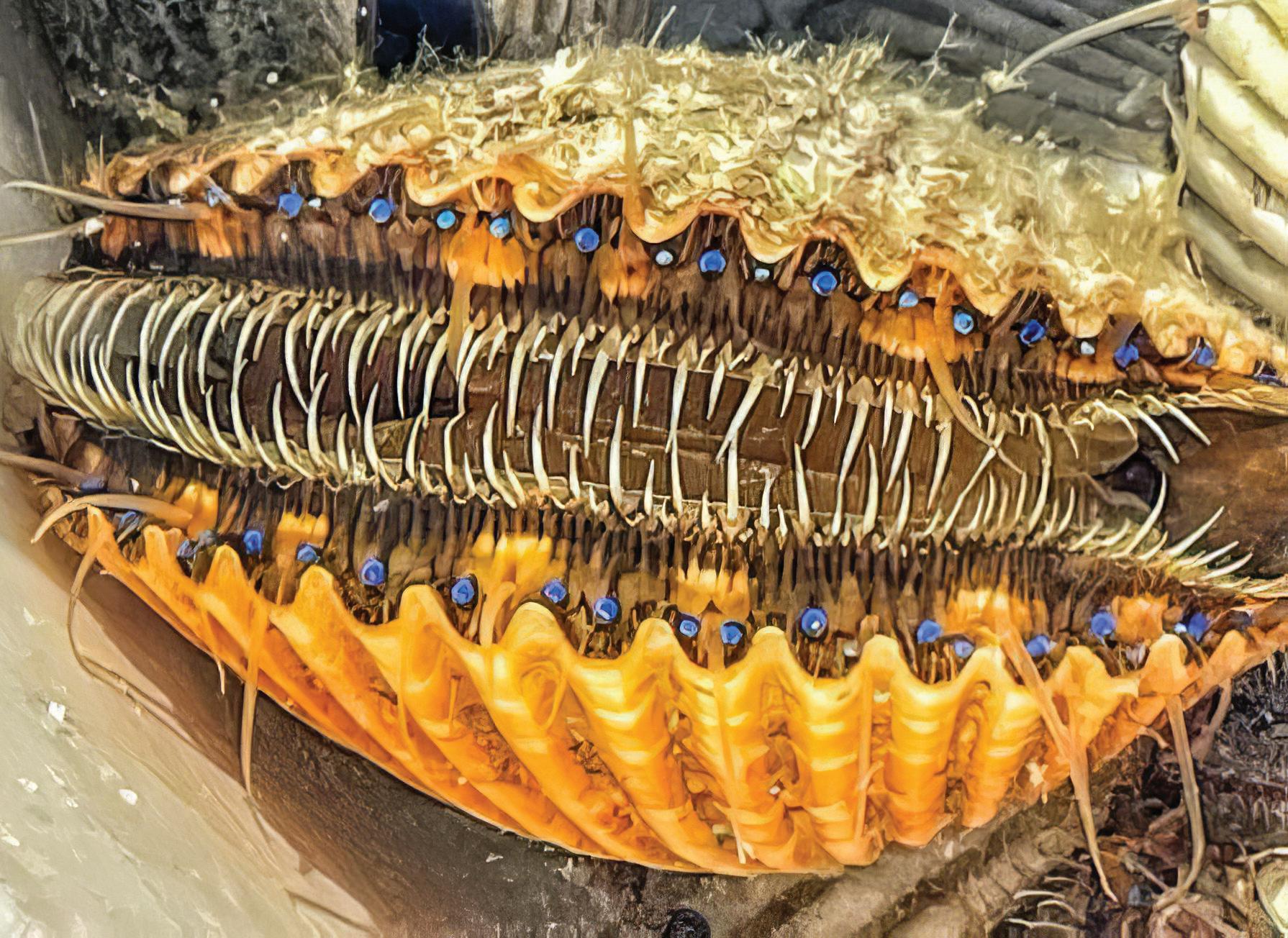
“Their shell looks like the one on the Shell gas station,” Curt says.
Captains bringing snorkelers out of Crystal River with Nature’s Discovery tours have 45 minutes before they hit open waters, so they educate their customers on the scallops’ life cycle, migration, reproduction and habitat in Gulf seagrasses and more. They teach how to fish for scallops without harming the environment.
“Our captains are very educated, and most of them are local,” Hina says. “They do a rundown before they put you in the water.”
Fishing Requirements
The daily bag limit for scallops varies. Most allow for 2 gallons of scallops per person, but the limit is less than that early in the summer for the Fenholloway through Suwannee River Zone. It’s best to check the Florida Fish and Wildlife Conservation and Commission website for details and updates.
All divers must use a Divers Down Warning Device—a flag—in the water, on the boat or both, and snorkelers must remain within 300 feet of the flag. Boats moving inside the range of divers must run at idle speed. The commission recommends one person stay on the boat to keep track of snorkelers.
Once the scallops are removed, the shells should be discarded in trash containers. Discarded shells in seawater may be harmful to recreational swimmers in rivers and can damage seagrass habitats, according to the FWC.
Seasons of Scallops
Scallop season begins first in the Suwannee River Zone—southwest Taylor and Dixie counties—on June 15 and continues through Labor Day. Franklin, Wakulla and northwest Taylor counties and the area surrounding Crystal River—Levy, Citrus and Hernando counties—start the season July 1, and it
Bay scallops have bright blue eyes, making them easy to spot under water.
PHOTO COURTESY OF NATURE’S DISCOVERY
runs through Sept. 24. The season in the Pasco Zone—New Port Richie area—is July 10 through Aug. 18. In Gulf County closer to the Panhandle, the season runs the latest, from Aug. 16 through Sept. 24.
Hina encourages those who wish to fish for scallops to do so earlier in the season. Even though the area around Crystal River has the longest season, running through the end of September, hurricanes sometimes disrupt plans closer to September.
Because scalloping is such a popular sport, the waters of the west coast of Florida fill up with boats during those few weeks each summer.
“You’ll see so many boats out there in the shallow waters,” Larry says, adding that’s why it’s so imperative to have dive flags marking where snorkelers are swimming. “You have to be mindful.”
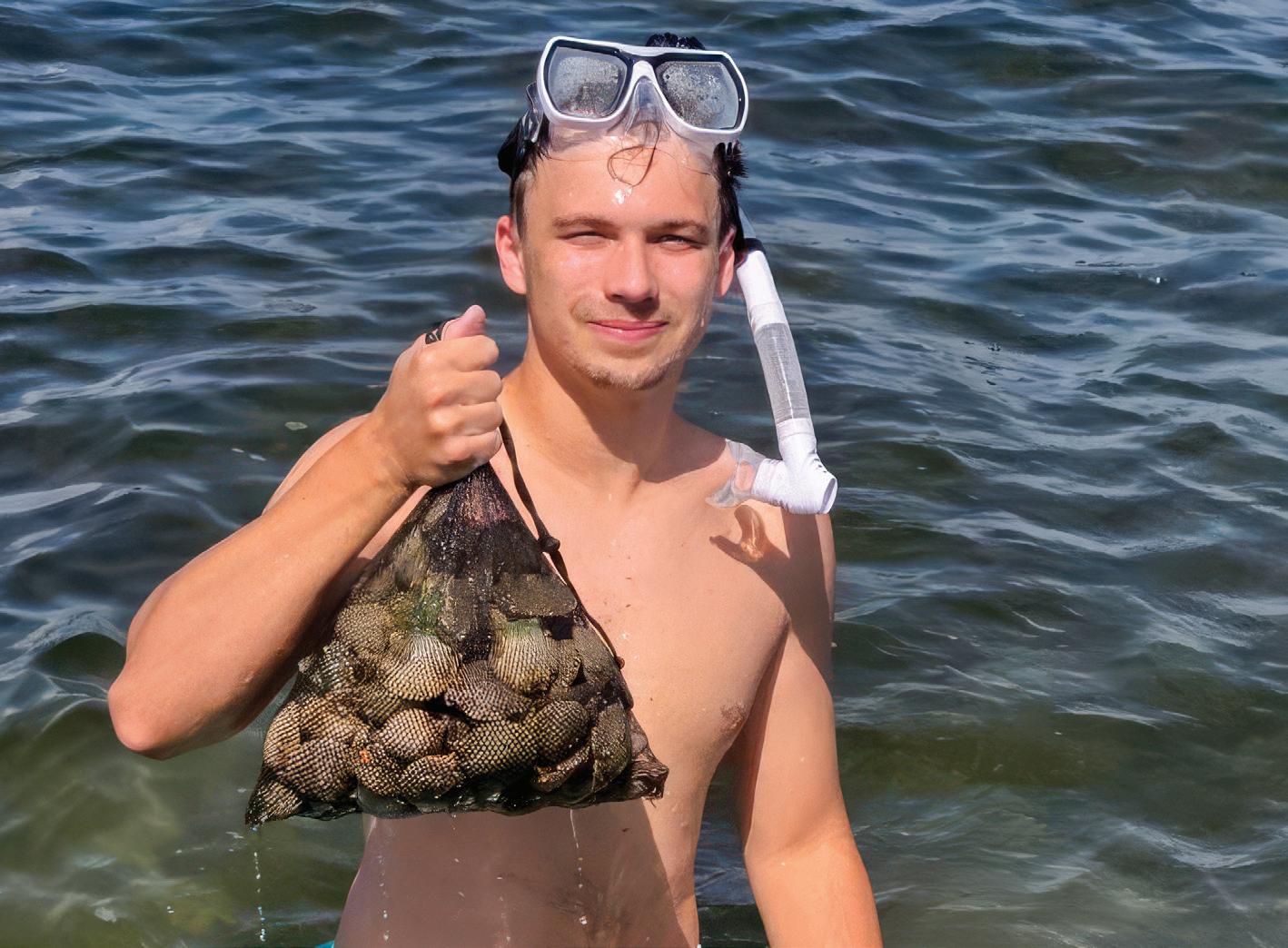
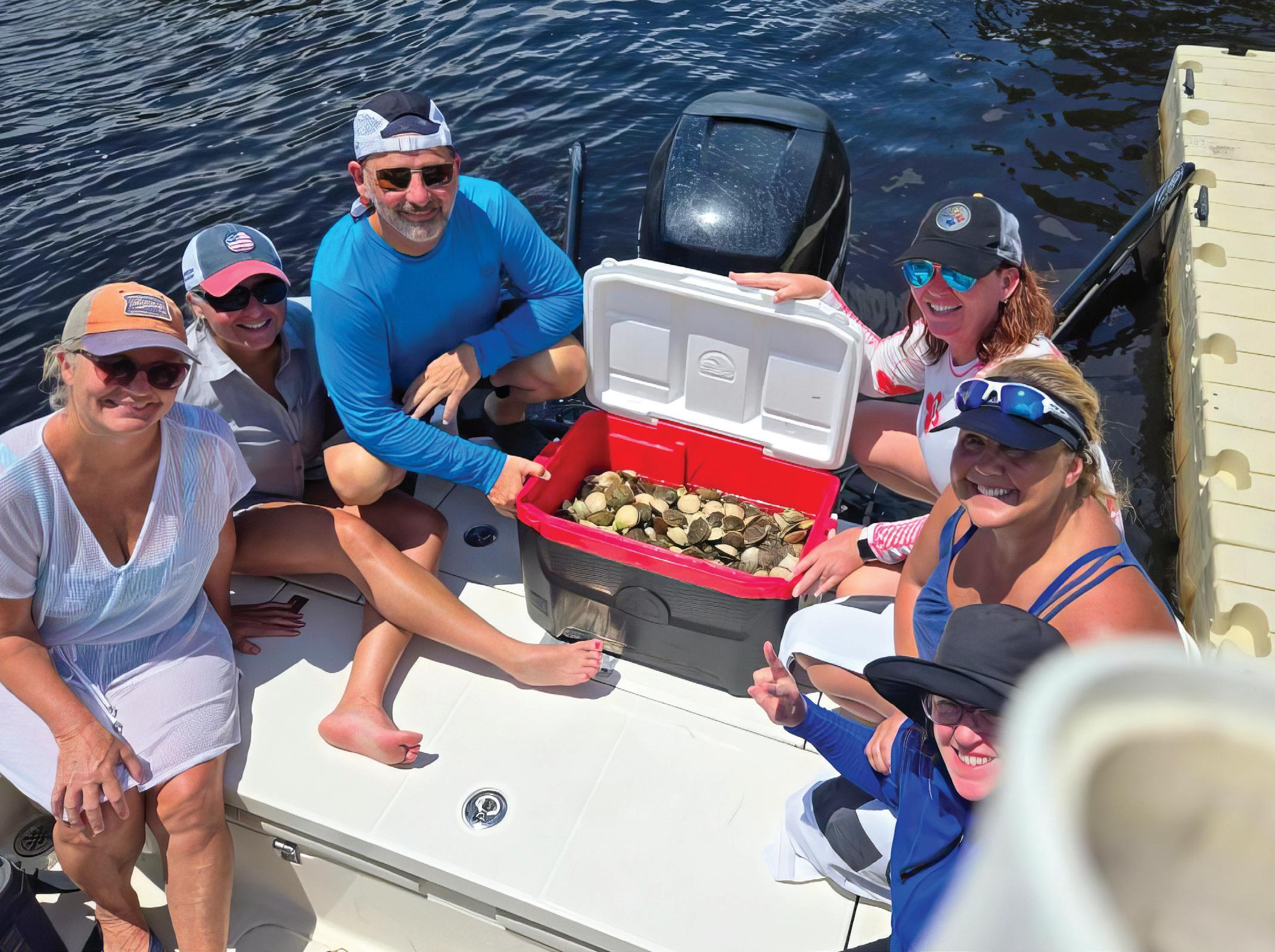


Capt. Curt Romanowski takes small groups out into Gulf waters to grab their legal limit of bay scallops. PHOTO COURTESY OF CURT ROMANOWSKI
During a small summer window, snorkelers can fill a bag of bay scallops. PHOTO COURTESY OF CURT ROMANOWSKI

Cooking Scallops
During Curt’s charter trips, he explains how to clean the scallops and remove the meat. Shells are disposed of responsibly, and meat is placed inside plastic bags.
Larry uses a soup spoon to easily remove the meat from the shell.
“It stays flush to the shell,” he says. “You get all of the muscle.”
Locals help clean shells at the pier where Nature’s Discovery tours leave and return. Area restaurants, such as Seafood Sellar & Cafe on U.S. Highway
90 and The Waterfront Social on King’s Bay, both in Crystal River, cook scallops received from snorkelers.
Like sea scallops, bay scallops may be pan-seared with any combination of butter, garlic, white wine and lemon, and enhanced with seasonings such as Old Bay. Larry and Curt say they like to serve their scallops over pasta.
“I make mine with alfredo sauce,” Curt said.
Bay scallops can also be eaten raw. Curt cleans a few on the boat and offers them to his guests to try.
“The meat’s so much sweeter when you eat them raw,” he says.
Hina agrees that raw scallops are delicious, but not everyone is brave enough to try one straight from the water.
“Florida people do,” she says. “Not sure the other people will.” n
For more information on bay scallops and scallop fishing, visit the Florida Fish and Wildlife Conservation Commission’s website, myfwc.com/research/saltwater/mollusc/ bay-scallops.
The ultimate guide to summer mocktails Mindful
Mixology
By Anne Braly
Alcohol-free beverages don’t have to be boring. They can be so flavorful you may rethink your idea of the afternoon cocktail—you may not even catch that the alcohol is a no-show.
TIKI COOLER
Ice cubes
6-ounce can pineapple juice
6 ounces coconut milk
3 limes, juiced
2 tablespoons almondflavored syrup
1 cup club soda, or as needed
4 pinches ground nutmeg
4 lime wheels
4 sprigs fresh mint






Whether it’s due to the rise of the mindfulness movements like Dry January and Sober September, not to mention alcohol-free happy hours, consumers are demanding more thoughtful
Place a few ice cubes in a pitcher. Add pineapple juice, coconut milk, lime juice and almond-flavored syrup. Stir until chilled.
Strain mixture and pour it into four glasses. Top each glass with club soda.
Dust each mocktail with nutmeg. Garnish with a lime wheel and a sprig of mint.






























beverages year-round.
So go ahead, take the plunge and have a mocktail party this summer. Here are some recipes that offer a cooling change for alcohol-free summer sipping.
STRAWBERRY REFRESHER
4 cups strawberries, sliced 1 cup white sugar
8 cups cold water, divided 5 cups ice for serving, or as needed
1 lime, cut into 8 wedges
8 fresh mint sprigs
Mix strawberries, sugar and one cup cold water in a medium bowl. Cover the bowl with plastic wrap, and place in the refrigerator for 4 hours.


Pour chilled strawberry mixture into a blender. Blend on high until smooth. Pour through a wire mesh strainer set over a large bowl; discard pulp and seeds. Stir remaining 7 cups cold water into strawberry juice until it is well combined.
Fill eight glasses with ice. Pour strawberry mixture over ice. Garnish each serving with lime wedges and mint leaves.









































































STRAWBERRY REFRESHER
GINGER CHAMPAGNE
GINGER CHAMPAGNE
2 2-liter bottles ginger ale or cranberry ginger ale, chilled, divided 46-ounce can pineapple juice, chilled 64-ounce bottle white grape juice, chilled
To make ice ring:
Fill a ring-shaped cake pan halfway with ginger ale. Freeze until partially frozen.
VIRGIN MARGARITA
¼ cup lime juice

cup orange juice

cup simple syrup
(equal parts sugar and water, cooked on the stovetop until the sugar dissolves)
1 tablespoon agave syrup, optional
Ice cubes
Salt, for rimming the glass, preferably kosher or sea salt
Lime wedges, for garnish
Club soda or lemon-lime soda, to top off the drink



Begin by rimming the glass. Take a lime wedge and rub it

At this stage, you can place edible flowers or pieces of fruit around the ring. Fill pan to top with ginger ale and freeze until solid. Place in punch bowl just before serving.
In a large punch bowl, combine one bottle ginger ale, pineapple juice and white grape juice, add ice ring to punch bowl, and let guests serve themselves.
ALCOHOLFREE MINT JULEP
¼ cup water
¼ cup white sugar
1 tablespoon chopped fresh mint leaves
2 cups crushed ice
½ cup prepared lemonade
Fresh mint sprigs, for garnish
Combine water, sugar and one tablespoon of chopped mint in a small saucepan. Cook and
ISLAND ICED TEA
around the rim of the glass. Dip the rim into a plate of salt to coat it. Add ice.
Fill a shaker or mixing glass with ice cubes. Add the lime juice, orange juice, simple syrup and agave syrup to the shaker. Shake well to combine the ingredients.
3 black tea bags
¼ cup pure maple syrup
1 medium red apple, thinly sliced
2 cups apple cider
Mint sprigs, for garnish
stir until the mixture boils and sugar is dissolved. Remove from heat. Set aside to cool for about an hour, then strain out mint leaves. Fill two cold cups or frozen goblets with crushed ice. Pour half of the lemonade into each glass, and top with a splash of cooled sugar syrup. Garnish each with a mint sprig, and add a straw for sipping.
depending on how strong you like your tea.
Remove and discard tea bags. Let tea cool to room temperature, then refrigerate until cold for 4 hours or up to 12.
In a small pot over high heat, bring 4 cups of water to a boil. Pour boiling water into a large heatproof pitcher or jar.
Add tea bags and maple syrup, and stir to combine. Let steep for 3 to 5 minutes,
When ready to serve, add apple slices and cider to pitcher, and stir to combine. Pour into individual tea glasses, making sure at least one apple slice gets into each glass. Garnish with a sprig of mint.
the everything. with















Strain the mixture into the salt-rimmed glass filled with ice cubes. Top off the drink with club soda or lemon-lime soda to add a bit of fizz. Give the drink a gentle stir to mix everything. Garnish the glass with a lime wedge.











































VARUN, SUPAMAS, GAN, OLEZ HAN, RICK, RAWPIXEL.COM,
G2G, DAVID,
ALCOHOL FREE MINT JULEP
ISLAND ICED TEA
VIRGIN MARGARITA
ISLAND
NIKON D810, 180mm lens ISO f/6.3200, at 1/25
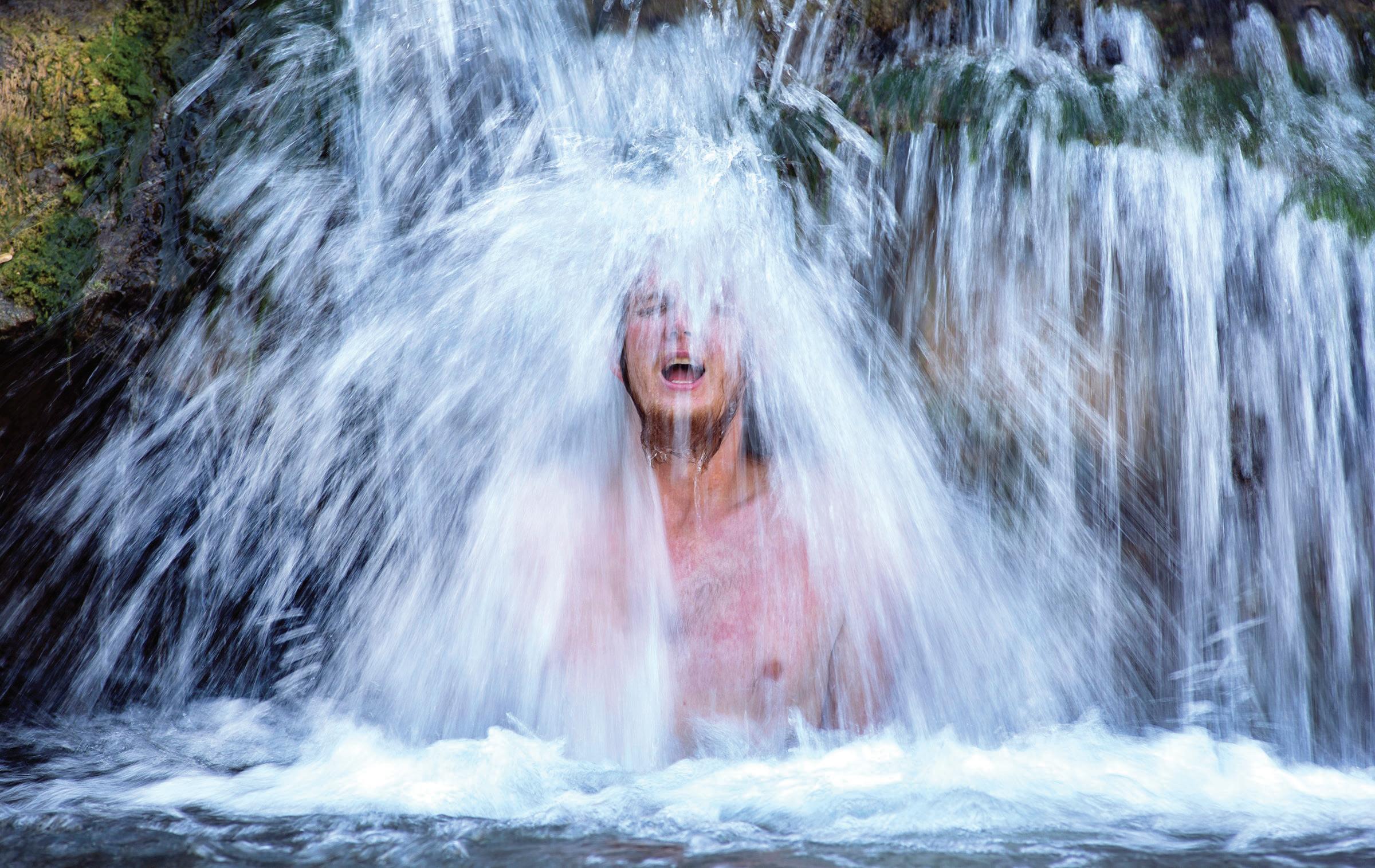
Relief From the Heat Reader Challenge
By Dave LaBelle
Most places on Earth get hot—some more than others.
California’s Death Valley is often one of the hottest spots on the planet. States like Arizona and Florida are great places to winter away from the ice, snow and frigid subzero temperatures, but they can be toasty and sometimes suffocating in the summer. As a newspaper photographer, coming up with good weather-related photographs was often challenging, but it’s a challenge I always enjoyed.
I remember an especially hot, bonedry summer working in Kansas when a reporter made a black-and-white photograph of shadowy fingers reaching across a hot, dusty country gravel road. The picture title exclaimed, “Cool as ice.” Several colleagues got quite a laugh about the caption, and one reporter even tacked it to a bulletin board, underlining the title in red.
As always, we looked for creative ways to express the heat.
Last summer, while visiting my home state of California, record-breaking heat swept across its Southern communities. While visiting with dear friends as I worked on a story, I joined them for a dip into the cold waters of a small stream moving through their property. After cooling off myself, I watched as one young man wiggled behind a small curtain of water. Since I had brought a camera, I immediately climbed out of the water and made several images of Nick Rainwater.
I knew that to capture the sensation of the moving water, I needed to slow the shutter speed, which I did. Usually, I shoot at 100 ISO, but the small waterfall was in shadow, so I bumped it up to ISO 200.
Just knowing a little about your camera and what it can do can make a difference in capturing a photograph that expresses what you see and feel. n
There are many ways to express temperature extremes. People bundle up in parkas with faces barely showing or sit on front porches as they fan beads of sweat dripping down their faces. What if you were assigned to make a photograph that communicated extreme temperatures. What would you do? Where would you look?
See if you can capture a photograph that shows people or animals seeing relief from the heat.
Email your best image—just one— with caption information, including an explanation of how it affects you, to gph@pioneer.coop. We may share submissions on our website and social media channels.
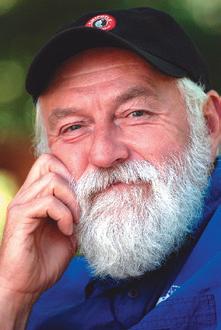
Photographer, author and lecturer Dave LaBelle has captured special moments for more than half a century, sharing photo tips and life perspectives with readers. For more of his writings, visit davidlabelle.com and his blog at bridgesandangels.wordpress.com.
“I never had pain -free feet – UNTIL NOW!”
Joint Pain, Arthritis & Improve Circulation!


Made from an extremely elastic blend of nylon, spandex, and latex that contours to each knee offering support and compression where you need it most!
DailyNergy Knee Sleeves are featured with special 3D knitting technology that effective in providing stable pressures to stabilize and support your knee; The braces also keep your knee warm and reduce stiffness; they are the best companion for your daily activities.
FOR WORK OR PLAY! - Suitable for all activities and exercises that involve a great amount of stress on your knees. Comes 2 sleeves per package.
Optimal Comfortable Compression - Well-balanced between compression and comfort, these braces disperse the pressure and improves circulation around your knee area. Will provide you an adequate compression without restricting your movements.
16.5"-18.5"
21.5”-25”


Breakthrough design helps improve blood flow, swelling, oxygen flow, and reduce foot fatigue –naturally in as little as 5 minutes!
Good news comes in the form of a painreducing, circulation-boosting sock design from DailyNergy.
Better Blood Flow!
This ‘miracle sock’ is made from proprietary blend of nylon and poly materials, which are optimally constructed to make a DailyNergy sock.
To get the right size, Please measure the circumference of your thigh 4” above the center of your knee cap.
4 Sizes to Choose From: Call 1-855-287-1800 Or Visit DailyNergy.com Breakthrough formula contains 8 different ingredients to help your dog not only feel better but move like they did when they were young.

DailyNergy socks feature graduated compression which exerts the greatest degree of compression at the ankle, and the level of compression gradually decreases up the socks. This forces the blood to move upwards, where there is more space.
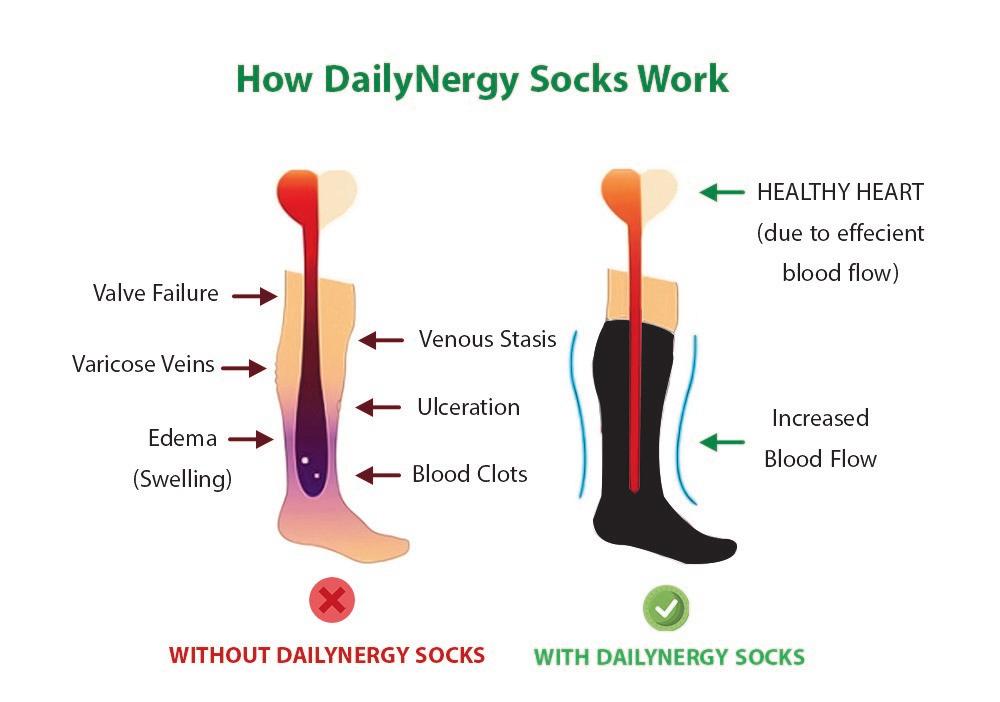



Often a ‘first’ fish, channel cats offer big sport for all
Widespread and abundant, channel catfish frequently get overlooked by their larger-whiskered cousins, blue and flathead catfish.
Although most channel catfish probably run in the 1- to 5-pound range, they can top 50 pounds. Florida’s state record is 44.5 pounds out of Lake County.
Native to Florida, channel cats thrive in freshwater systems throughout the state. The state periodically stocks them across Florida, particularly in small urban or park ponds. They inhabit areas from small ponds and tiny muddy ditches to massive lakes and rivers.
Easy to catch, channel cats make splendid targets for novices, as well as exciting action for experienced anglers. In fact, many top professional anglers started by catching channel cats close to their homes as children.
Channel cats eat almost anything. They love crawfish, small invertebrates, insects, small fish and practically anything they can scoop off the bottom. Some better catfish baits include chicken livers, shrimp, gizzards, crickets, worms, nightcrawlers, minnows, cut fish, shad, fish guts and commercial stink baits—anything with a strong odor. The more it smells, the better channel cats like it. Occasionally, they hit lures but overwhelmingly prefer natural baits.
Even flooded, muddy rivers that look more like chocolate milk than a place where fish might live can provide outstanding catfish action. Catfish love muddy water. With about 10,000 taste buds per square inch of skin, a catfish can detect minute food particles or scents over long distances in the muddiest, darkest conditions. They can distinguish odors down to one part per 10 billion parts of water.
Catfish can even detect live prey with natural “scanners” in their heads. Every living cell emits a tiny electrical field. Catfish use their electrosensors to detect prey at night or in muddy waters. They also acutely sense sound waves far better than most




Whiskered Fury



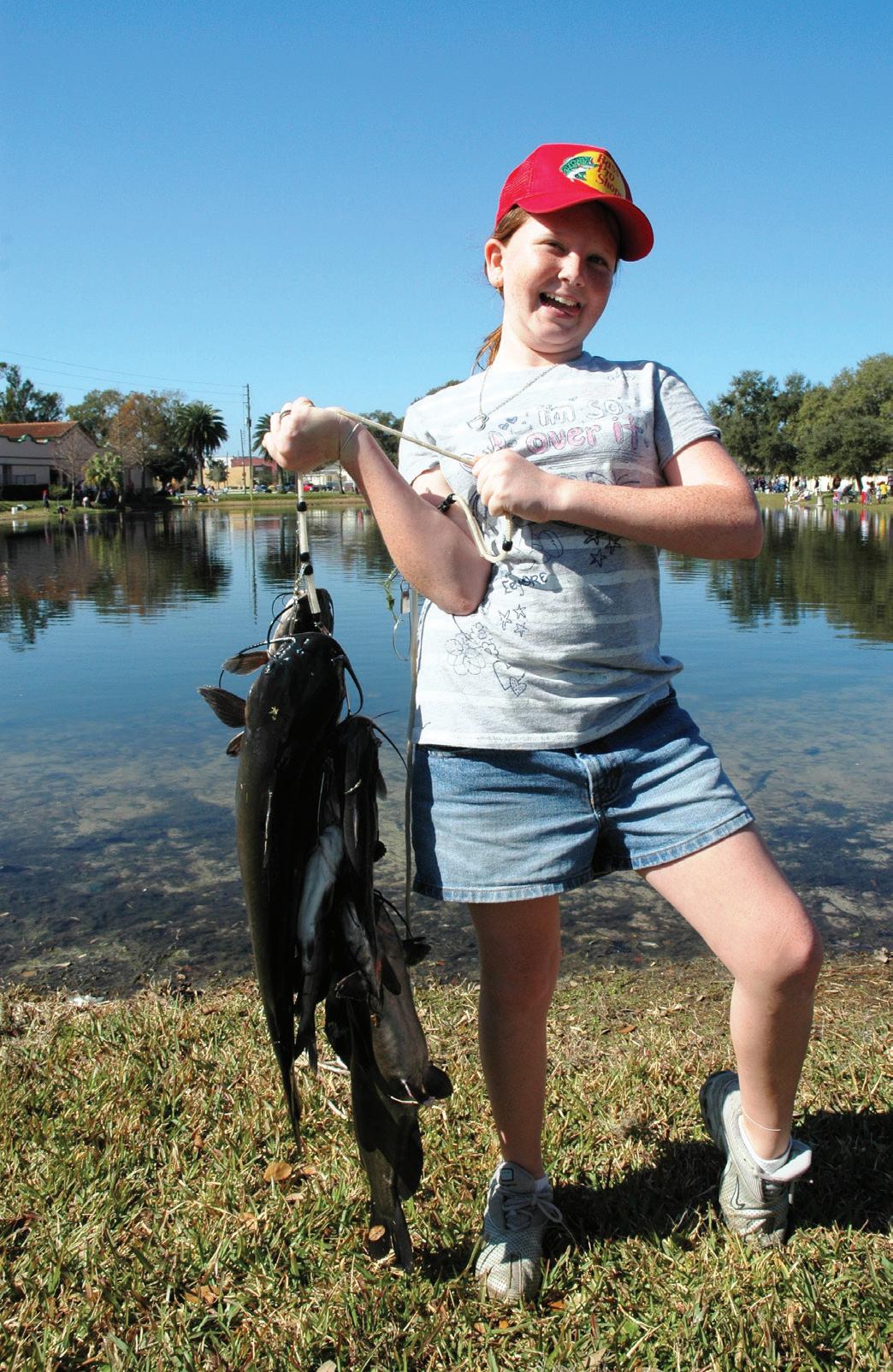

fish. With such highly tuned sensing abilities, a catfish might not take an offered bait, but it will certainly know it’s there.
For best results, fish just before dark, at night or early morning when catfish are most active. Chumming can concentrate catfish in an area. Toss pieces of liver, oily canned pet food, tuna fish, blood or animal entrails into the water. Add just enough to flavor the water and keep catfish interested without feeding them. Then, offer a succulent bait on a hook.
It doesn’t take much finesse to catch channel cats when they want to eat. Dangle a natural bait under a float around logs, fallen trees, stumps, weed beds or other cover. Often, bigger catfish prowl along shoreline drop-offs. If shallow waters don’t produce bites, toss a bottom rig into deep holes and wait.
While many anglers grow out of chasing catfish as they move to other fish like bass or salty species, these whiskered scrappers can still provide excellent sporty action for anglers of all ages and skill levels. They also taste great on the table.
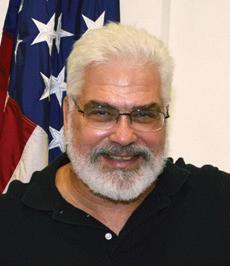
John N. Felsher is a freelance writer, broadcaster, photographer and editor. He’s written more than 3,500 articles on a wide variety of outdoor topics. Contact him at j.felsher@hotmail.com or through Facebook.
A young angler struggles to lift a stringer of channel catfish she caught in a park pond in Sanford, Florida. Periodically, the state stocks channel catfish in such ponds and elsewhere for people to catch. PHOTO COURTESY OF JOHN N. FILSHER
Stay in the home you love with a Stiltz Homelift
Our home elevators can t just about anywhere in your home
THE MODERN SOLUTION
A Stiltz Homelift is a safe, attractive, & affordable alternative to stairlifts. It requires no special machine room, and no supporting walls.
ECONOMICAL
& FLEXIBLE
A Stiltz Homelift can t just about anywhere in your house. It has a compact footprint, similar in size to a small armchair. A Stiltz Homelift plugs into a standard home electrical outlet, using less power than a coffee maker.
YOUR FOREVER HOME
IT’S NEVER TOO SOON

AARP survey data shows that 77% of adults 50 and older want to remain in their homes for the long term. At Stiltz, we’re here to help you stay in your home you love. It’s easy. Did you know?
Some Stiltz customers need a Homelift immediately. But others want to “future-proof” their homes for when the stairs become a challenge.
HOMELIFT SPECIALISTS
Stiltz is a world leading Homelift manufacturer, so you’ll be in good hands. Your elevator will be installed and maintained by Stiltz trained professionals who truly care about your freedom.
Avoid the expense and distress of relocating, or the disruption of adapting your home for downstairs living. A Stiltz Homelift helps you live safely and independently in the home you love.
“I can’t imagine what we’d do without it. I wish we had installed our Stiltz Homelift several years ago!”
– Mr. James, Roanoke, VA
• Affordable
• Small Footprint
• Full Safety Features
• Clean, Quiet Operation
• Low Power Consumption
• Freestanding Design
• Wheelchair Accessible
• Carry Laundry or Pets
• Fast Installation
• Full Warranty





FLORIDA CURRENTS
PLANNER
All ages can find something new and exciting around every corner of the state. Filled with rich history, abundant natural beauty and diverse events all year, Florida has something fun for everyone.
KEY WEST
July 2-6
Key Lime Festival


Key West’s annual Key Lime Festival celebrates the world’s most sensational citrus with an array of festivities across the island where Key lime pie was conceived. Over five days, lovers of the lime can indulge in a full menu of activities, including a kickoff cookbook signing with festival cofounder and “Key West Key Lime Pie Cookbook” author David Sloan; Key lime-centric dinner and brunch events; a world-famous Fourth of July Key lime pie eating contest; and a gravity-defying Key lime pie drop competition from the top of Key West Lighthouse. www.keylimefestival.com; 305-295-9112
PANAMA CITY
July 3
Beach Summer Concert Series
Hot summer nights are made for music, and this summer concert series has become a beloved summertime tradition in Panama City Beach. Enjoy a free concert at 7 p.m. in the park every Thursday at Aaron Bessant Park Amphitheater. July’s concerts include Last Left, a classic rock band; The Will Thompson Band, playing a variety of genres; Still Standing, an Elton John tribute band; and Bee Taylor, featuring Americana, pop, soul and funk music. Bring your lawn chairs and blankets, and enjoy the sounds of summer music. Coolers, food and pets are welcome. bit.ly/3Tem4YD; 850-233-5070
KEY WEST
July 3
Truman Waterfront Farmers Market

Shop with a view every Thursday from 2-7 p.m. at Truman Waterfront Farmers Market on the harbor by the USCG Ingham Museum. Find great food options, including ready-to-eat items, fresh Florida produce and other grocery items, along with gifts, home decor, art and more. Located at the corner of Southard Street and Weech Way.
keysartisanmarket.com; 305-731-3385
LAKE PLACID
July 4
Annual Fireworks Show by Jaycees
Join the Jaycees and the town of Lake Placid for this annual show. The show begins at 9 p.m., so be sure to settle in at your viewing spot by then. The fireworks are launched over the northeast cove of Lake Junein-Winter. Viewing is best by boat or shoreside at Lake June-in-Winter Park, 501 Jackson Road, or H.L. Bishop Park, 10 Lake June Clubhouse Road.
863-465-4331


PENSACOLA
July 4
Flora-Bama All-American 4th of July Party
The Fourth of July is a great day to celebrate our nation’s birthday at Flora-Bama. Come enjoy the beach, listen to live music and watch the fireworks from the beach at night. Fireworks start at 9 p.m. Bring your family and friends for a day of fun on the beach.
www.florabama.com/4th-of-july-party; 251-980-5118









BRADENTON
July 4
AMI Privateers 4th of July Parade
It be Fourth of July parade time, mateys. The parade begins at 10 a.m. and routes from Coquina Beach to Anna Maria City Pier. This parade involves the use of water by most participants, so you may get wet. Do not throw water balloons or use high-pressured water nozzles or guns on any participants.
bit.ly/4jLdknD; 941-650-8673
CANTONMENT
July 5
Into the Woods: Artist’s and Farmer’s Marketplace


You are invited to the inaugural Artist’s and Farmer’s Marketplace. Set on 6 acres, this homestead is a thriving hub of honey bees, fresh vegetables and exquisite pottery, making it the perfect destination for artisans, farmers, makers and bakers. Come explore exceptional products from talented creators while enjoying the peaceful surroundings. 850-679-4750
KEY WEST
July 5-31
Studios of Key West: Mango Madness
Close out the season with a splash of color and creativity this summer members’ exhibition and an annual tradition, bursting with more than 120 works of art by local creatives. From mango-themed masterpieces to unexpected delights, it’s a feast for the eyes—and taste buds. The Coconut Koalas play music on the roof from 6-8 p.m. tskw.org/mango-madness; 305-296-0458
PENSACOLA
July 13
Vintage Fest


Pensacola Vintage Collective again hosts the Panhandle’s largest vintage clothing event at Pensacola Interstate Fairgrounds. The main expo hall includes more than 75 of the area’s best vendors of vintage clothing, styles and genres dating from the 1950s to 2000. Last year’s event saw more than 1,000 patrons shopping the highly curated and specialized vintage clothing booths. Word has spread that Pensacola is a hotbed for vintage clothing, and dealers and shoppers are traveling from neighboring states to be part of this event. There are food trucks on-site to fuel your day of shopping.
www.pensacolavintage.com; 850-221-6213
SEBRING
July 19
Christmas in July Vendor Fair
Join the Sebring Chamber of Commerce from 10 a.m. to 4 p.m. at Historic Circle Theatre for the Christmas in July Vendor Fair. The event is free and features more than 30 local vendors showcasing their unique crafts and goods. While you shop, let the little ones explore Santa’s Workshop, filled with delightful activities. Enjoy refreshments and participate in exciting raffles for a chance to win prizes. 863-385-8448


PENSACOLA
July 9
Red, White and Blues Week
The Blue Angels perform over Pensacola Beach on Santa Rosa Island. Locals and visitors look forward to the annual Pensacola Beach Air Show every summer. The show highlights hometown heroes—the Blue Angels—the U.S. Navy’s flight demonstration squadron stationed at Forrest Sherman Field aboard Naval Air Station Pensacola. The Blues hold several practice sessions along the beach in the days leading up to the big event on show day. www.visitpensacolabeach.com/what’s-happening-blue-angels; 850-932-2257
PENSACOLA
July 26
Christmas in July


Come shop local at the historic downtown Pensacola social club. The Woman’s Club of Pensacola was organized in 1920 and have been tucked away in this downtown location since 1932. A variety of vendors offer products to help attendees start their early Christmas shopping at this indoor arts and crafts shopping event. The clubhouse is at 1551 E. Heinberg St. There is no need to stop for lunch, as a chicken salad entree is available for purchase. 850-207-0295
KEY WEST
July 26
Hemingway 5K Sunset Run
Join fellow runners and walkers for this 36th annual run. Final registration for the evening race is at Southernmost Beach Cafe, 1405 Duval St. New for 2025, the race is to start and end at the Southernmost Point Buoy/ Marker. The run is followed by a beach gathering with awards, raffles and live entertainment. www.keywesthalfmarathon.com/hemingway-event-details
PANAMA CITY BEACH
July 26
U.S. 5K and Half Marathon
The race starts at 8 a.m. at Conservation Park Trailhead. Packet pickup starts 30 minutes before the race and ends 10 minutes before it starts. All runners must register on RunSignup. There is no on-site registration. bit.ly/4dV7BKH
HOW TO INCLUDE UPCOMING EVENTS
Want to share a family-friendly event with the readers of Florida Currents? Head online and enter the details at tinyurl.com/FloridaCurrents or use the QR code for easy access. Make sure to submit the item at least 60 days before the event (due to press deadline). If you own rights to a print-quality photo promoting your event, include it with photo credit information.




ADOBE STOCK IMAGE BY MATTHEW TIGHE
GARDENING
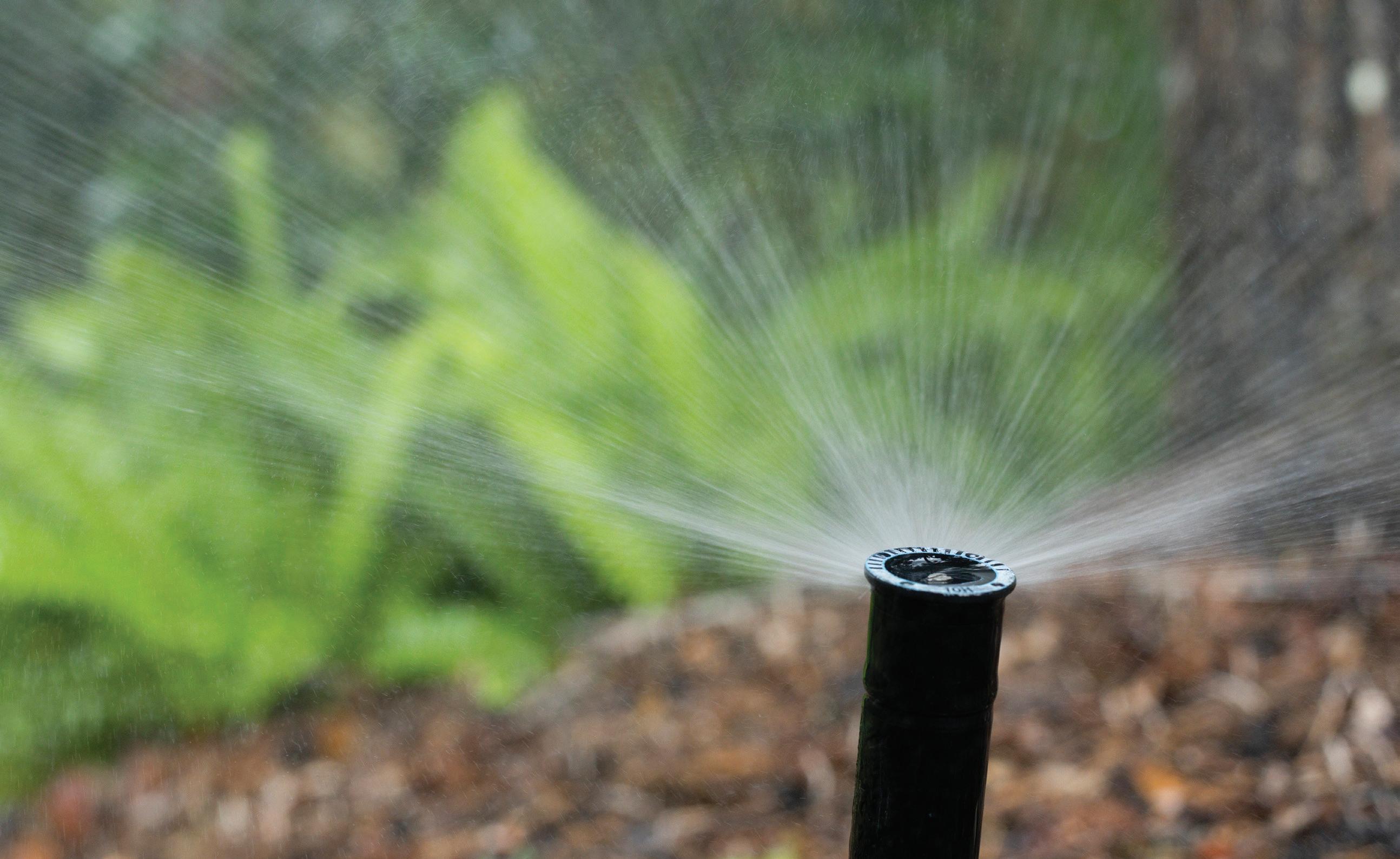
Water Conservation During Drought
When it’s hot and dry, it’s important to think of water conservation.
In Florida, more than 50% of potable water is used for lawns and landscapes in residential areas. The goal is to keep plants alive while conserving water.
Here are a few adjustments you can make to your lawn and landscape to help plants survive drought conditions.
Tips to Conserve Water
Observe your plants carefully and water when you notice wilting. It’s natural for plants to wilt in the middle of the day in direct sunlight, so check them for water stress in the morning or evening.
Increase your lawn’s mowing height to encourage a deeper root system, which can better withstand drought.
Top-dress your lawn and landscape beds with compost to increase the soil’s moisture-holding capacity.
Apply 2 to 3 inches of mulch to landscape beds to reduce evaporation. Learn more about Florida-friendly mulches at edis.ifas.ufl.edu/publication/EP626.
Remove weeds from garden beds to reduce competition for water.
Place saucers under potted plants. To retain water.
Install a rain barrel or a rain garden to capture rainwater.
Water between 4 and 8 a.m. when it’s coolest and evaporation rates are low. Be sure to follow local watering restrictions per your water management district.
Check your irrigation systems to make sure they are working properly. Clean filters and fix any breaks or leaks.
Remove plants not well-suited for your landscape and replace with droughttolerant plants, such as muhly grass, beach dune sunflower, saw palmetto and firebush. Now is a good time to make
sure you have the right plant in the right place.
It’s important to conserve the water used for lawns and landscapes to save potable water for more important uses, such as drinking. As Florida’s population continues to grow, the state faces potential water shortages in the coming years. Water conservation is the best and cheaper option compared to the cost of alternative water supplies, such as desalinization.
To learn more about Florida’s drought, visit sfyl.ifas.ufl.edu. For more information on lawn management during a drought, visit bit.ly/4kNyPFF. A list of drought-tolerant plants can be found at bit.ly/4jgjqMT.
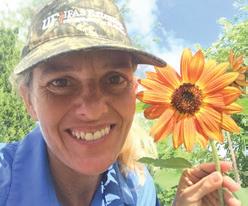
Tia Silvasy is a residential horticulture and Master Gardener volunteer program coordinator with UF/IFAS Extension Hillsborough County.
PHOTO COURTESY OF UF/IFAS
Trading Post
For Rent
Horse barn with five stalls, paddock and about 4 acres of pasture in Wewahitchka, one block from the old courthouse. Lease by the stall, with discount for multiple horses. 740-334-0341.
12 acres coastal Bermuda pasture. Irrigation available. 850-814-7015 or 850-814-6078.
1.5 acres available for honey harvest, Wewahitchka. Space for 100 beehives. 240-848-8682.
For Sale
Miniature donkeys. Jacks and jennies; black, brown, gray and paints. All ages. $300 and up. Make great pets. Also, standard donkeys. Betty, 850-899-7424.
Used for only one week: walker, $20; shower chair, $25; raised toilet seat with arms, $25; grabber arm and long-handled shoehorn, $15 for both. All items priced at half or less of original cost. 850-703-5728.
Book available through Amazon by a local author: “A Guide Through the Ages of Childhood” by Audrey S. Brigman. Full of ideas for baby items needed, birthday gifts, senior year, etc.
German shorthaired pointer puppies. Good family pets and excellent hunting stock. Males and females. $600. 850-486-1610.
Single bed box spring, mattress and frame in good condition. $25. 850-866-0009.
Where imagination becomes a reality: woodworking, candles and collector wands. www.alivans.com.
Miscellaneous
Eco-X LLC. Guided kayak/ paddleboard eco-tours on clear freshwater springs. Hike Florida trail segment #36. Private, primitive camping. Paddle, hike, camp. Your local guide to adventure. 850-326-9116.
WJ Land Management. Florida licensed and insured. Forestry mulching, land clearing, culverts, fencing. Fast, free and reliable estimates. William, 850-628-4714; Tabatha, 850-628-4713.
Custom fences built on your property. Call David for your free estimate. 850-819-9987.
Kapua Kleans for your final interior cleanup, deep clean, residences, condos, rental properties. Steph, 850-704-2412.
SLR Farm & Landscaping. Lawn care, grass cutting, bush hogging, backhoe work. 706-575-4570 or 850-703-5321.
C&2 Electrical Services LLC. Residential and commercial electrician services. 850-899-8218 or 850-899-8217.
Handyman services. Painting, flooring, building repair, odds and ends. Free estimates and fully insured. TJ, 207-612-8255 or 207-578-1830.
The 850 Stump Grinder LLC. Free estimates, multistump discount, residential and commercial. Veteran-owned and -operated. 850-814-0720.
Koastal Home Repair LLC. Fencing, decks, painting, light tractor work, repair work and maintenance. Insured. 850-227-5509.
Merchant Management Group is a local payments technology company based in Panama City, working with quick-service restaurants, full-service restaurants and retail shops and specializing in the latest point-of-sale systems, including Tabit, OrderCounter and Clover. Have worked with hundreds of Gulf Coast businesses since 2004 and have an A+ rating with BBB. Schedule your demo, 850-747-0664.
Hamco Business Solutions is conveniently located in downtown Panama City with its warehouse in Lynn Haven. Hundreds of products at discounted prices, including receipt paper, ink cartridges, deli paper, kitchen paper and copy paper. Free, same-day delivery on most products. Shop local and save. Call for a free quote, 850-942-5600.
Trading Post is a FREE service to Gulf Coast Electric Cooperative members. GCEC reserves the right to edit or reject ads.
PLEASE PRINT LEGIBLY OR TYPE.
Please circle the category that applies: For Rent For Sale Real Estate Free
Miscellaneous Trade Wanted
Items:
Name: Phone:
Address: Mail your ad to: The Trading Post; Gulf Coast Electric Cooperative; 9434 Highway 77; Southport, FL 32409; return with your electric payment; or email ad information to tradingpost@gcec.com.
** Due to press deadlines, please expect up to 60 days from submission for your advertisement to appear.
Tree Be Gone. For all your tree needs, from trimming to complete removal. 850-819-9987.
Carter’s Land Clearing and Mulching LLC. 850-527-4715.
Rachel’s Facials, Lashes and Brows now offers permanent makeup. Booking for August 2025. Services include ombre and powder brows, classic and foxy eyeliner, and aquarelle lip blushing. Discounts for military, law enforcement, educators and medical professionals. 2518C Highway 77, Lynn Haven. Rachelsflb.com or call 850-896-4855.
Real Estate
FSBO: Two adjacent lots, about 2.5 acres on paved road, 10 miles north of Wewahitchka, 45 minutes from beaches. Border the Chipola River and Cypress Creek. Cleared and ready to build. Quiet and peaceful; no neighbors. Deeded restrictions. Underground utilities, deep well, many fruit trees. $69,900. 850-648-4214.
Three-bedroom, two-bath home on 1-acre lot on the Choctawhatchee River at Cedar Log Boat Ramp, 80 Old Creek Road, Ponce de Leon, FL 32455. Wayne, 850-373-7944; Jason, 850-258-1085.
2.5 acres lakefront on Deerpoint Lake, 30 to 45 minutes from Panama City. Paved road, electricity, septic, close to schools, quiet and peaceful. Can be divided. 850-265-5554.
Half-acre corner lot. 850-639-2220.
Wanted
Single mother of four in need of a working stove and refrigerator. Selling six-seat golf cart (needs charger and batteries), $300, and antique piano (over 100 years old and very heavy), $100. 850-447-2117.


Tips for New Homes
By Miranda Boutelle
Q: What are some energy-efficiency upgrades I should consider when building a new house?
A: Prioritizing energy efficiency when building a new home can create future savings and make living more comfortable. It might cost a little more upfront but will pay off in the long run.
Let’s explore two approaches: Following an energy-efficiency certification plan or adding energy-efficient design and equipment to your construction project.
There are several energy-efficiency certifications available for newly constructed homes that may qualify for discounted homeowner’s insurance, tax credits and other incentives.
Leadership in Energy and Environmental Design certification ensures the home uses less energy while prioritizing sustainable resources and healthy indoor air quality. LEED-certified homes use 20%-30% less energy than the average home—with some homes saving up to 60%—and can cost the same as non-LEED homes with proper planning, according to the U.S. Green Building Council.
Passive House certification requires the home to be so efficient it needs little to no heating and cooling equipment while remaining comfortable for its occupants. To achieve up to 90% less energy use than the average home, the certification focuses on maximizing the efficiency of the building envelope—all components that separate the indoors from the outdoors—including proper insulation levels, air sealing and high-efficiency windows.
Energy Star NextGen Certification for New Homes recognizes houses that are 20% more efficient than the average home and help reduce greenhouse gas emissions by 40%-80%.
Although various certifications are available, you don’t have to follow a set guide. Consider adding these energy-efficiency principles to your new home build.
Advanced framing techniques maximize the amount of insulated area and save on material costs in wood-framed homes. This
technique can save on material costs—up to $500 for a 1,200-squarefoot home and $1,000 for a 2,400-square-foot home. It can also save 3%-5% on labor costs and up to 5% on annual heating and cooling costs, according to the U.S. Department of Energy. Choose a contractor who is familiar with these techniques, and check with your local building officials to ensure compliance with local codes.
The importance of a home’s orientation is often overlooked. According to the International Association of Certified Home Inspectors, homes oriented toward the path of the sun use less energy for heating and cooling to reduce energy bills and improve comfort.
If you are building or buying a new home that doesn’t allow options for orientation or framing, you might be able to request higher insulation levels in the attic. Increasing the insulation levels likely won’t cost much more for materials and labor, but it can help you use less energy and save money in the long run.
Heating and cooling equipment should be properly sized using energy modeling tools that calculate the home’s heating and cooling needs. Investing in a more efficient building envelope that is wellinsulated and air-sealed can reduce the home’s heating and cooling load, making it possible to have a less expensive heating and cooling system. This saves money on equipment costs and lowers energy use.
Optimizing the efficiency of a new home requires a whole-house approach. Analyze all systems and how they work together to ensure maximum efficiency for a safe and comfortable home.
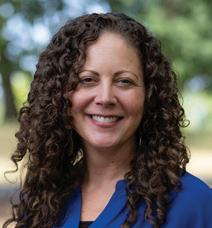
This content was originally created by Efficiency Services Group LLC under contract with NRECA. NRECA retains ownership of this content. NRECA does not endorse Efficiency Services Group, its views herein expressed, nor any products or services it offers.
Miranda Boutelle has more than 20 years of experience helping people save energy. She has worked on energyefficiency projects from the Midwest to the West Coast. Today, Miranda is chief operating officer at Efficiency Services Group in Oregon, a cooperatively owned energyefficiency company.







































POWER DIVERSITY
Why America’s electric grid needs a mix of fuels
By Sable Riley and Michael Leitman
America’s appetite for energy never takes a break—and neither can the power grid. That reliability stems from a diverse energy mix. Across the country, electric utilities depend on coal, natural gas, nuclear, wind, solar, hydropower, biomass—from organic waste like wood chips—and geothermal sources to keep the power flowing.
Energy Mix by the Numbers
According to the U.S. Energy Information
Administration, natural gas is the leading source of energy, generating about 43% of the United States’ electricity in 2023, the most recent statistics available.
Coal, once dominant, has fallen to about 16%. Nuclear produces roughly 18%, delivering reliable baseload power. Renewables continue to grow. Wind contributes about 10%, hydroelectric dams about 6%, solar farms 4%, and biomass and geothermal together account for 1-2%.
Altogether, renewables make up just more than 20% of the mix. This balance—60% fossil fuels, 20% nuclear and 20% renewables— leverages the strengths of each resource.
Electric utilities embrace an
all-of-the-above strategy. Jim Matheson, CEO of the National Rural Electric Cooperative Association, says diversity of electric generation, including baseload sources, is essential to providing dependable, affordable power.
Utilities use what’s local and available— hydro in the Northwest and solar in the Southwest—and exchange power regionally to stay flexible.
Dispatchable and Nondispatchable Sources
Some sources can be turned on when needed; others can’t. Dispatchable sources like natural gas, coal and hydropower—if
What Fuels the Four Regions of the United States
Energy choices—and the sheer volume of power produced— swing wildly once you break the country into the four Census Bureau regions. This map shows each region’s 2023 electricity output, then stacks the fuel mix so you can see who leans on gas, who burns coal, and where wind, solar and hydropower dominate from coast to coast.

Midwest (945 terawatt-hours)
• Natural Gas: 25%
• Coal: 32%
• Nuclear: 12%
• Renewables: 31% - Wind: 24% - Solar: 3% - Hydropower: 3% - Other: 1%
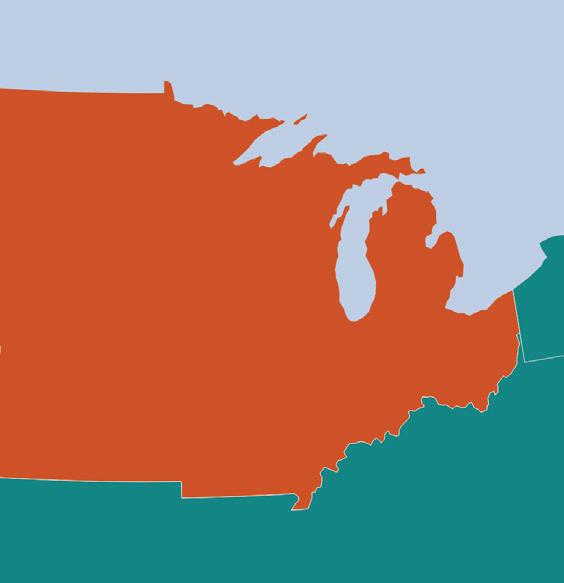

NOTE: Percentages are approximate shares based on the most recent data available from the U.S. Energy Information Administration utility-scale net generation. *Other renewables combine biomass and geothermal fuel data.
West (766 TWh)
• Natural Gas: 30%
• Coal: 10%
• Nuclear: 4%

• Renewables: 56%
- Wind: 14%
- Solar: 18%
- Hydropower: 22%
- Other: 2%
• Petroleum: 1%
Northeast (524 TWh)
• Natural Gas: 47%
• Coal: 5%
• Nuclear: 29%
• Renewables: 18% - Wind: 5% - Solar: 4% - Hydropower: 8%
- Other: 1%
• Petroleum: <1%
South (1,934 TWh)
• Natural Gas: 45%
• Coal: 18%
• Nuclear: 17%
• Renewables: 19% - Wind: 9%
- Solar: 6% - Hydropower: 3% - Other: 1%
• Petroleum: 1%
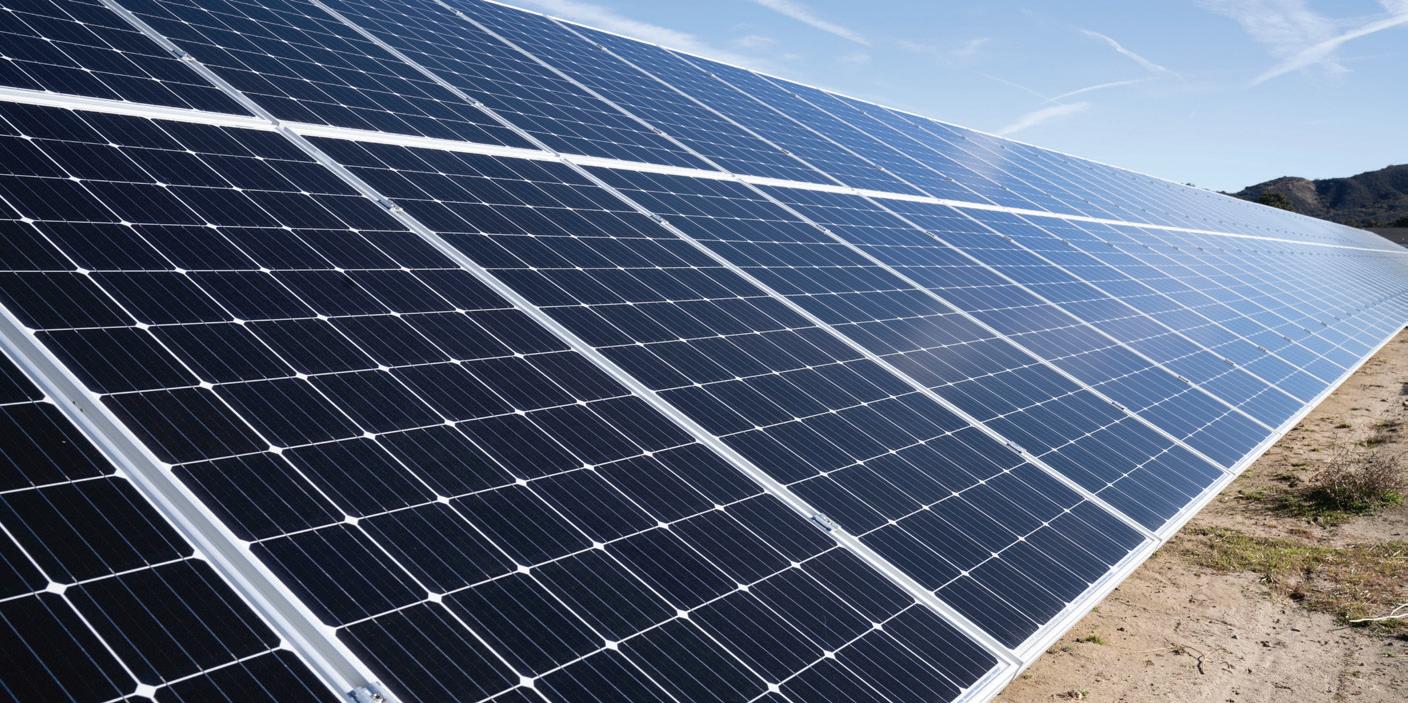
those resources are available—ramp up and down on command, responding instantly to demand changes. In contrast, nondispatchable sources like wind and solar depend on weather. A reliable grid needs both types working in concert. On a sunny afternoon, solar farms may flood California’s grid with power. At sunset, fast-start gas and hydroelectric plants take over.
“The growth of renewables has had many benefits, but the wind doesn’t always blow, and the sun doesn’t always shine,” Southwest Power Pool’s Paul Suskie said in a 2023 congressional testimony on grid security.
Grid operators must rely on other fuel sources to ensure demand can still be met, Paul said. Real-world events underscore this interplay.
During California’s 2022 heat wave, battery storage systems and gas plants met peak evening demand after solar generation declined. Conversely, Winter Storm Elliott in December 2022 caused blackouts in parts of the Southeast when more than 100,000 megawatts of coal and gas capacity failed during freezing conditions. That crisis revealed the risk of over-reliance on a single resource.



Policymaking and Grid Reliability
Electricity demand is also skyrocketing, fueled by new data centers and a surge in domestic manufacturing.
According to the North American Electric Reliability Corp., electric demand growth is now the highest it has been in more than two decades. Over the next 10 years, peak power



needs are expected to rise by more than 18%, with new projects driving demand even higher. That puts grid reliability under the microscope.
Regulators at the Federal Energy Regulatory Commission and at the state level are adjusting policies to support capacity, storage and demand response. In 2024, FERC Commissioner Mark Christie warned the United States is heading for a catastrophic situation in terms of reliability if changes aren’t made carefully during testimony before the House Subcommittee on Energy, Climate, and Grid Security.
The nation’s energy mix is shifting, driven by economics, innovation and policy choices. Federal incentives from the 2022 Inflation Reduction Act accelerated investments in solar, wind, batteries and advanced nuclear. At the same time, environmental regulations are prompting closures of older coal and gas plants.

NERC’s 2024 assessment cautions that rising demand combined with shrinking


LEFT: Renewable energy sources like solar and wind provide many benefits and can deliver low-cost electricity, but they only generate electricity when the sun shines or the wind blows.
are
baseload capacity puts many regions at risk of shortfalls during extreme conditions— even after recent solar and storage additions.
Strengthening Renewables
Energy storage is a promising development. Batteries help balance intermittent renewables by storing surplus energy and releasing it when needed. Battery capacity in the United States jumped 66% in 2024 to roughly 26 gigawatts and could nearly double again by the end of 2025, according to the U.S. Energy Information Administration.
The Bottom Line
No single energy source can guarantee affordable, uninterrupted electricity across a country as vast and weather-diverse as the United States. Natural gas is flexible but susceptible to supply disruptions. Coal and nuclear plants offer consistent output but are less adaptable and aging. Wind and solar, while clean, depend on weather, and storage solutions remain limited.


Having a range of energy resources safeguards against any one fuel becoming scarce, expensive or unexpectedly unavailable. That’s why electric utilities continue to invest in a balanced portfolio of energy sources—diversity gives the grid the resilience it needs to meet demand in the moments that matter most.






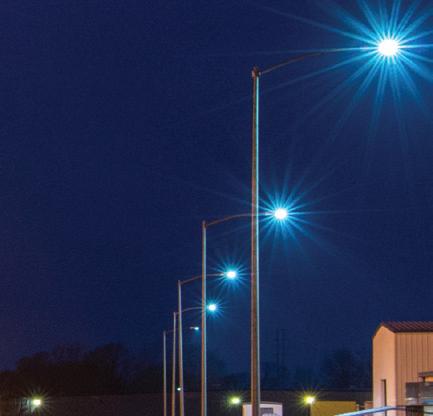
PHOTO COURTESY OF NRECA BELOW: Most areas of the United States
powered by natural gas plants. PHOTO COURTESY OF BRENT WALLACE
Fishing at First Light
From lakes to the ocean and parks to beaches, Florida’s geography is vast and beautiful. Some of you have views from your homes that rival the views of national parks.
From time to time, we share some readers’ photos in this space. If we use your photo here, we will send you your choice of a $25 gift card to REI or Amazon.
To submit your photo, email a JPEG file to photos@floridacurrents.com. Include “Before You Go” in the subject line. Please share a bit about what inspired you to make your photo.

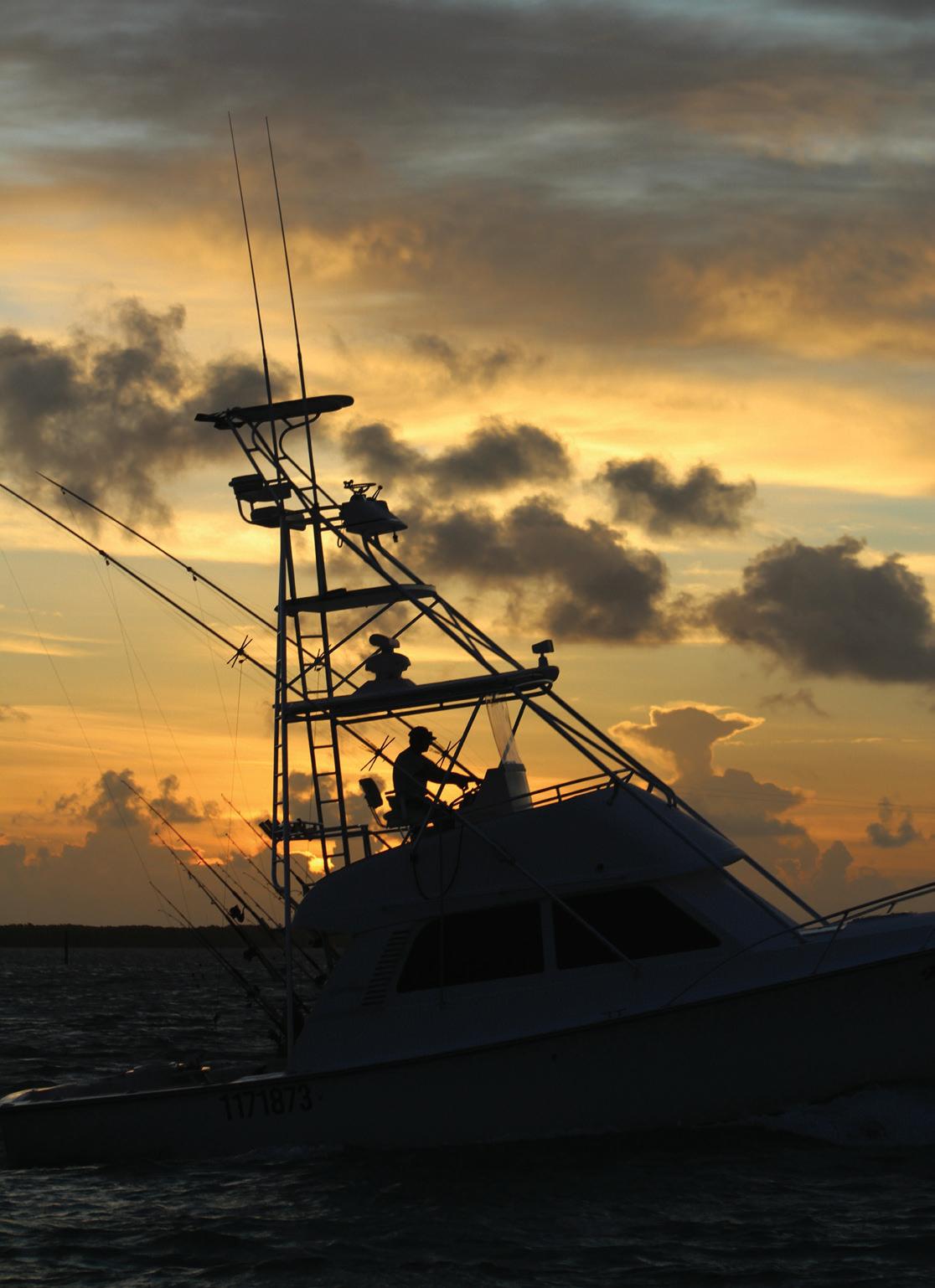


•
•
•
•
•
•
•
• Give your children a financial head start right now. Your policy builds CASH
for your family’s needs.
A fishing boat makes its way across the water at sunrise in Islamorada’s Whale Harbor. PHOTO BY CINDY SMITH
ENERGY SCAMS TIPS TO AVOID
Always be cautious of unsolicited calls—or in-person visits—to your home from companies claiming to conduct energy audits.
These are typically telemarketing firms that claim to be a third-party company or pose as a representative from your electric utility to gain access to homes and sell services with the promise of government rebates.
Many electric co-ops provide energy audit services, but they are typically scheduled at the member’s request.
Source: Better Business Bureau

OFFICES
722 W. Highway 22
P.O. Box 220
Wewahitchka, FL 32465
850-639-2216 or 800-333-9392
9434 Highway 77
Southport, FL 32409
850-265-3631
Outages: 800-568-3667
6243 E. Highway 98
Panama City, FL 32404
850-481-1188
www.gcec.com
CEO/GENERAL MANAGER
John Bartley
TRUSTEES
President Dwight Van Lierop
Vice President Betty Moore
Secretary/Treasurer Jimmy Black
Rupert Brown
Robert Byrd
Carl Goodson
Eddie Jones
Pat Patterson
Patrick Pitts
Trustees normally meet at 12:30 p.m. CDT the third Tuesday each month.
The mission of GCEC: Fulfilling the changing needs of our membership and communities by providing costeffective, reliable and safe utility services through a dedicated and responsive workforce.
Gulf Coast Electric Cooperative offices are closed Friday, July 4, in observance of Independence Day.
Members can access their accounts and report power outages anytime through the GCEC app—available on the App Store and Google Play—online at www.gcec.com, or by calling any of our office phone numbers. From all of us at GCEC, have a safe and happy holiday weekend.
FL-154
GCEC President’s Message
Who Owns What? Understanding electric equipment responsibilities
As July rolls in with longer days and rising temperatures, it also brings an increased potential for severe weather. Summer storms can arrive quickly and hit hard, sometimes causing significant damage to essential electric equipment throughout our service area.
Gulf Coast Electric Cooperative is always prepared to respond swiftly to outages and restore power safely, but it is important for homeowners to understand which parts of the electric system are their responsibility and which are maintained by the co-op. Understanding these key differences can help speed up repairs and ensure everyone stays safe when the weather turns rough.
GCEC is responsible for maintaining and repairing the equipment and lines that run to your home, including utility poles, distribution power lines, electric meters and padmounted transformers.
Co-op members are responsible for the equipment between the electric meter and your home or business. Members are also responsible for the weatherhead and service mast outside the home.
If any equipment that you, the homeowner, are responsible for is damaged, call a licensed electrician to conduct the repairs. A professional has the experience and know-how to assess and manage these types of repairs.
When severe weather damages electrical equipment, it’s important to note that any necessary repairs to the homeowner’s equipment must be conducted before GCEC crews can restore power to your
home or business.
By understanding the equipment you are responsible for, the repair and restoration process will be smoother and faster.
Tree Trimming
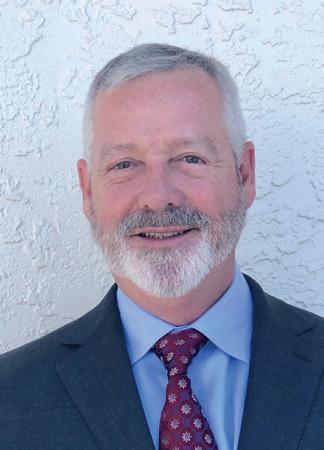
Our community takes great pride in the beautiful trees and landscaping that contribute to the natural beauty where we live. However, regular trimming is essential to ensure reliable electric service and minimize damage from severe weather.
GCEC regularly trims trees throughout our service territory to improve service reliability. If you spot a tree limb obstructing a distribution power line outside your home, call us so we can trim those limbs and maintain those lines.
Any overgrown limbs or vegetation around the service line is the homeowner’s responsibility, and in these cases, call a professional tree trimming service to assist.
By working together to understand the essential equipment that powers daily life, we can all be better prepared to start the repair and restoration process if severe weather affects our community.
Gulf Coast Electric Cooperative partners with HomeServe, an independent company, to provide members with affordable emergency repair plans that help protect against costly and inconvenient covered repairs to systems throughout their homes and properties. Please visit the “Resources” section of www.gcec.com.
Dwight Van Lierop
